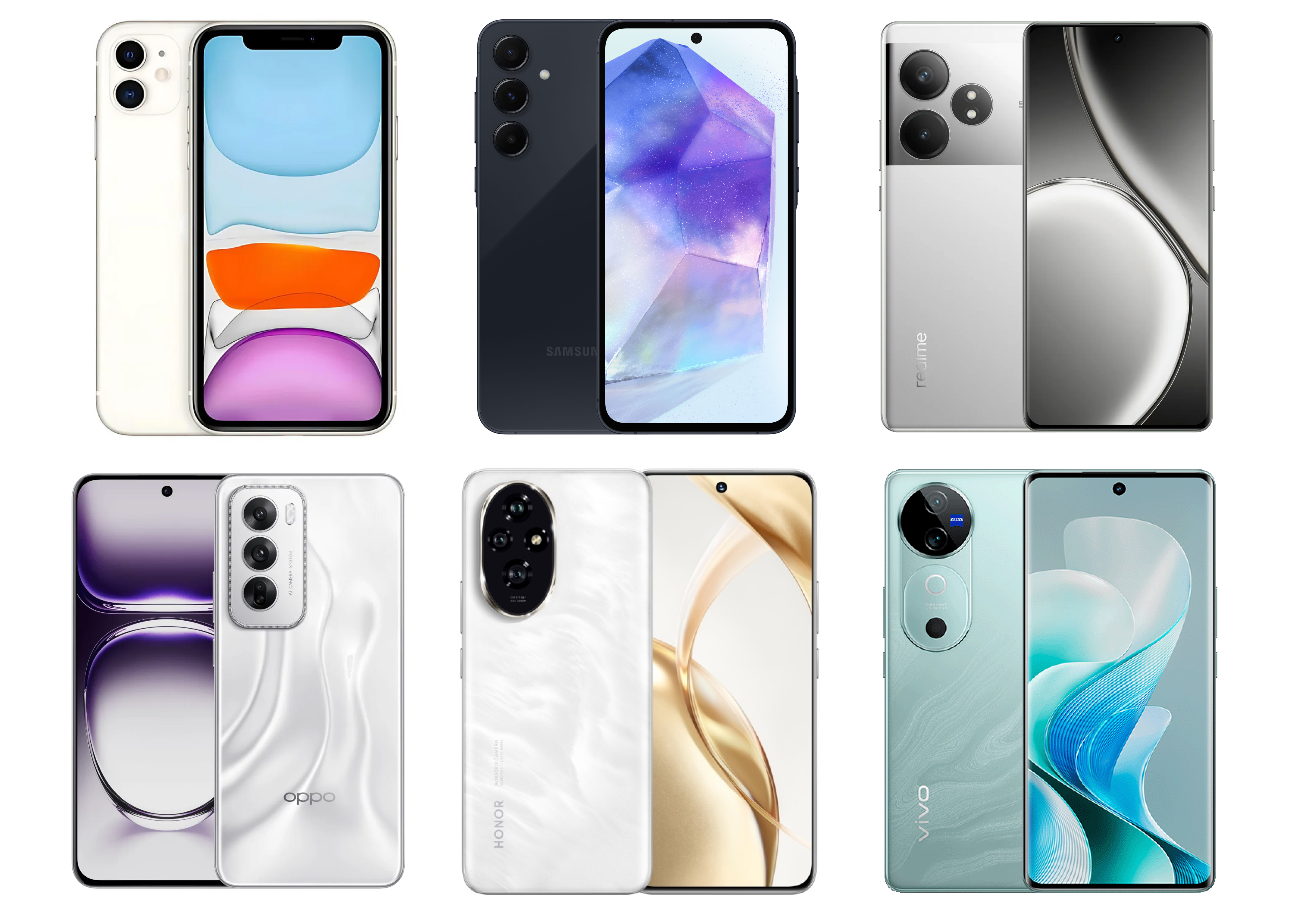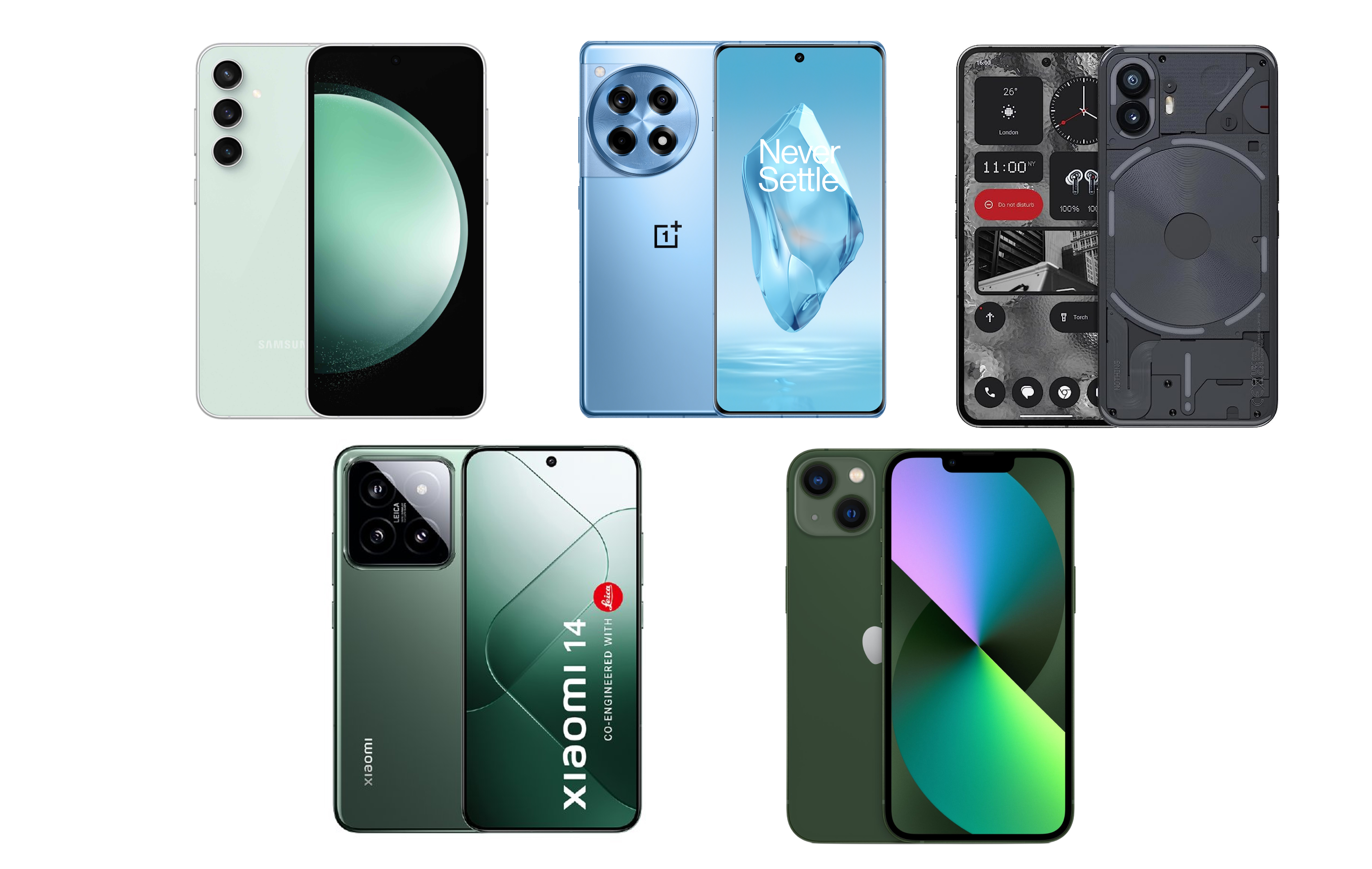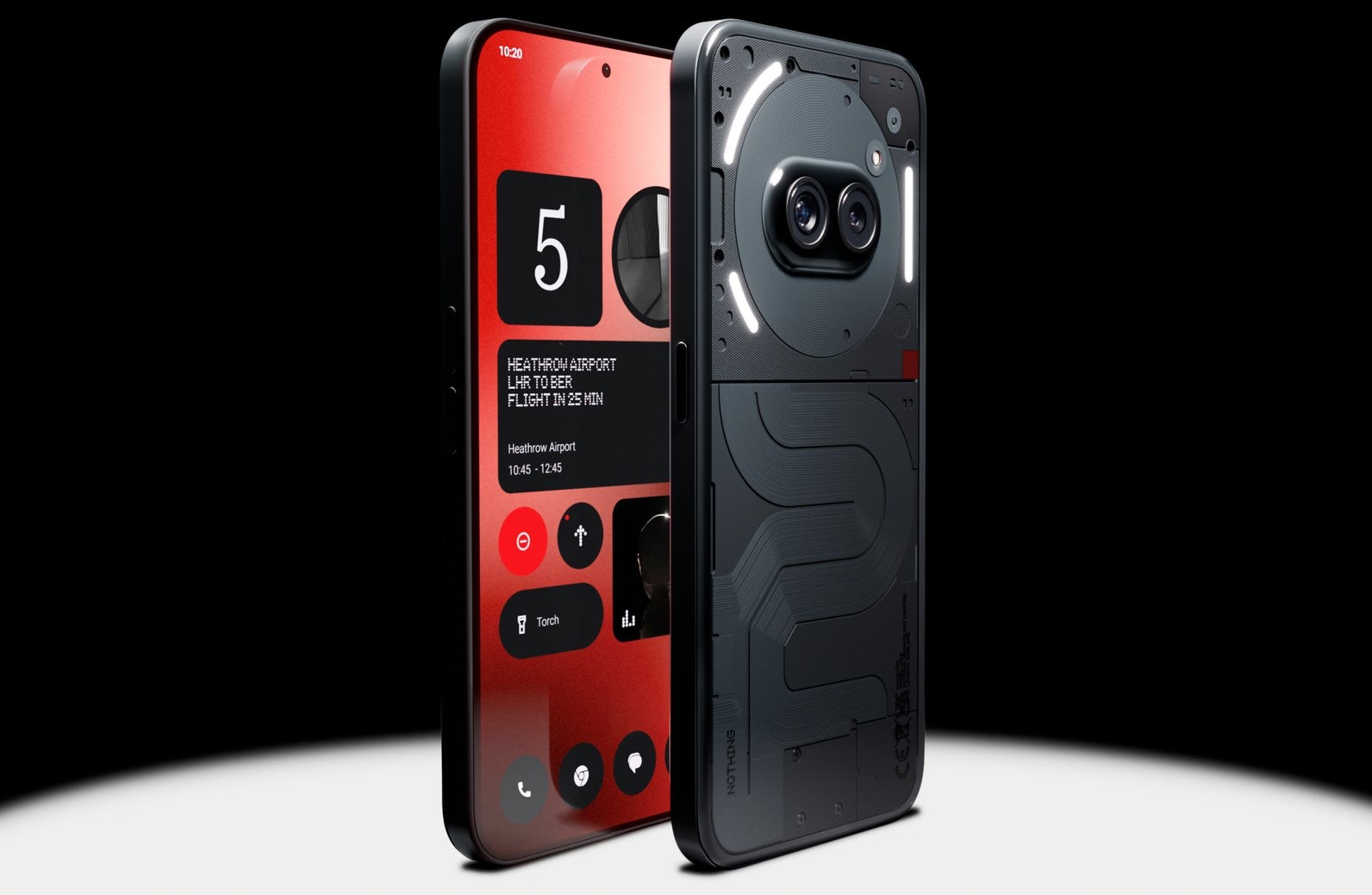
As 2023 comes to a close, the smartphone market showcased an excess of options across various categories, including budget, midrange, flagship, foldable, and flip phones. Among the diverse choices, certain smartphones stood out as leaders in terms of price, features, specifications, and aesthetics.
But which smartphones emerged as the top contenders?
In 2023, Nepal witnessed the arrival of several smartphones from various brands, although some models remained unavailable. Nevertheless, we have curated a list of our top picks encompassing various genres, highlighting some of the best smartphones of the year.
List of the Best Smartphones in the Year 2023
| S.N. | Smartphones |
| 1. | Redmi 12 |
| 2. | Samsung Galaxy A34 5G |
| 3. | Nothing Phone 2 |
| 4. | Xiaomi Note 13 Pro+ |
| 5. | ASUS Zenfone 10 |
| 6. | Google Pixel 7a |
| 7. | ASUS ROG Phone 7 Ultimate |
| 8. | Samsung Galaxy Z Flip5 |
| 9. | OnePlus Open |
| 10. | Apple iPhone 15 and 15 Pro series |
| 11. | Samsung Galaxy S23 Ultra |
| 12. | Google Pixel 8 and 8 Pro |
1. Redmi 12
Let us start with the budget category. Budget categories in the Asian regions in comparison to the western regions are far cheaper. The budget smartphones which are found in the Asian regions are not even heard of in the Western regions. One smartphone which stood up to its price tag and has been preferred by many in the budget category is the Redmi 12. The Redmi 12 was first launched back in June and was unveiled about a month later in the Nepali market.

The sub-brand of Xiaomi, the Redmi with this smartphone gained the market very quickly for its looks, performance and features in Nepal.
| Dimensions | Height: 168.60mm Width: 76.28mm Thickness: 8.17mm Weight: 198.5g |
| Display size | 6.79-inch |
| Display type | IPS LCD DotDisplay |
| Resolution | 2,460 x 1,080 |
| Refresh rate | Up to 90Hz |
| IP rating | IP53 dust and splash resistance |
| Chipset | MediaTek Helio G88 12nm manufacturing process |
| CPU | Octa-core 2 x Arm Cortex-A75 @ 2GHz 6 x Arm Cortex-A55 @ 1.8GHz |
| GPU | Arm Mali-G52 |
| OS | MIUI 14 based on Android 13 |
| RAM | 6GB | 8GB |
| Storage | 128GB | 256GB Supports expandable storage: up to 1TB |
| Rear camera | 50MP main camera, f/1.8 8MP ultra-wide camera, 120° FOV, f/2.2 2MP macro camera, f/2.4 |
| Selfie camera | 8MP, f/2.1 |
| Wi-Fi | 2.4GHz | 5GHz |
| Bluetooth | 5.3 |
| SIM | SIM1 + Hybrid* (SIM or MicroSD) *Hybrid slot can be used either for a second SIM or a MicroSD card(1TB expandable) |
| Audio | 3.5mm headphone jack |
| Security | Side fingerprint sensor AI face unlock |
| Battery | 5,000mAh (typ) |
| Charging | 18W fast charging |
| Sensors | Accelerometer E-compass Fingerprint (side-mounted) |
| Colours | Sky Blue | Polar Silver | Midnight Black |
| Price | Rs 17,999 (6/128GB) Rs 20,999 (8/256GB) |
The Redmi 12 has a sleek design with a glass back, a rare among budget smartphones. It features a triple rear camera setup with a design similar to the POCO F5. It has a 6.79″ FHD+ DotDisplay and a brightness of up to 550 nits. It is powered by the MediaTek Helio G88 chipset and MIUI 14 based on Android 13, it comes in 6GB/128GB and 8GB/256GB variants, with virtual memory capabilities up to 16GB RAM.
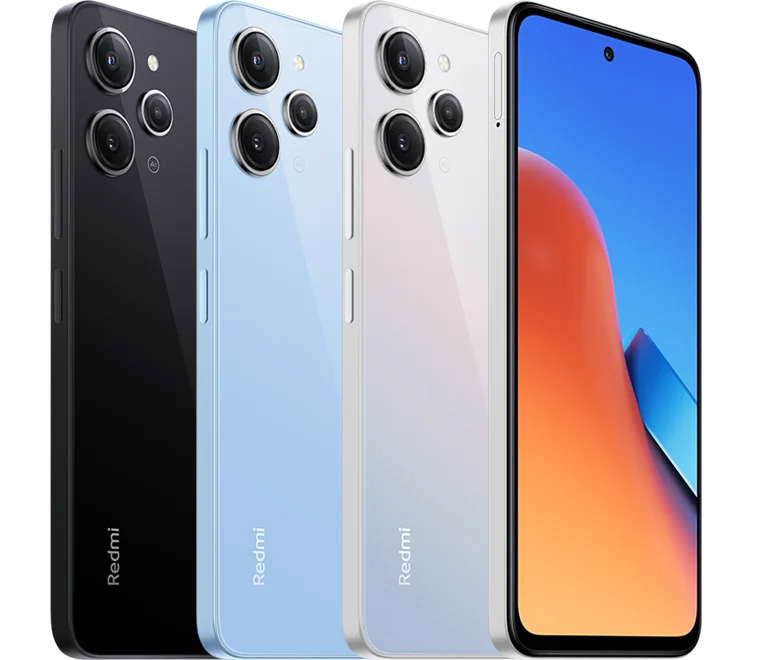
The camera setup includes a 50MP main camera, an 8MP ultra-wide lens, and a 2MP macro lens, while the front houses an 8MP sensor. A robust 5,000mAh battery with 18W fast charging, IP53 rating for durability, dual SIM/microSD expandability up to 1TB, a 3.5mm headphone jack, and versatile connectivity options define its functionality. Security features include a side-mounted fingerprint sensor and AI face unlock. Available in Sky Blue, Polar Silver, and Midnight Black, the Redmi 12 is priced at Rs 17,999 for the 6/128GB and Rs 20,999 for the 8/256GB variants in Nepal.
2. Samsung Galaxy A34 5G
The A series lineup from Samsung has made headlines for a few years now. This year A series also did very well competing against Apple in the most sold smartphones of 2023. As a mid-range option, the Samsung Galaxy A34 5G is one pretty good option. The A34 5G was launched alongside its older sibling and another popular A series smartphone the Samsung Galaxy A54 5G. The A54 5G is slightly premium with better built, performance and camera specs. However, under Rs 50,000, the A34 5G is also a great option.
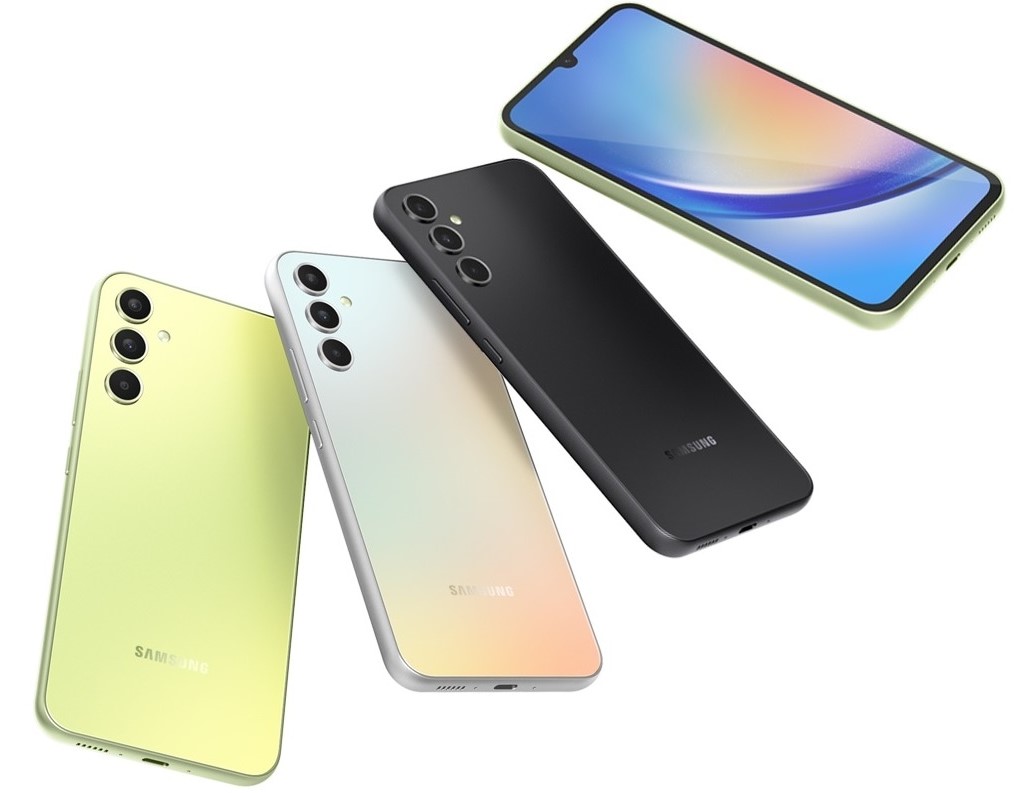
| Dimensions | 161.3 x 78.1 x 8.2 mm |
| Display size | 6.6-inch |
| Display type | Super AMOLED Display |
| Weight | 199 grams |
| Refresh rate | 120Hz |
| Resolution | (Full HD+) 1,080 X 2,340 pixels |
| Chipset | MediaTek Dimensity 1080 (6nm) |
| GPU | Mali-G68 |
| OS | OneUI 5.1 based on Android 13 |
| RAM | 8GB |
| Storage | 128GB |
| Rear camera | Primary camera: 48MP Ultra-wide camera: 8MP Macro camera: 5MP |
| Selfie camera | 13MP |
| Battery | 5,000mAh |
| Charging | 25W wired |
| Sensors | Accelerometer Fingerprint sensor Gyro sensor Geomagnetic sensor Hall sensor Light sensor Virtual Proximity sensing |
| Colours | Violet, silver, lime, and graphite |
| Prices | Rs 45,999 (8/128GB) |
The Samsung Galaxy A34 5G shares the same design as its older sibling, A54 5G. It features a 6.6-inch display with a drop-notch front camera placement and a plastic frame and back. It has a SUPER AMOLED 120Hz display with FHD+ resolution, Corning Gorilla Glass 5, and IP67 dust/water resistance. It is powered by the MediaTek Dimensity 1080 chipset and OneUI 5.1 based on Android 13. It is available in one memory option of 8GB RAM and 128GB storage. Its triple camera setup includes a 48MP primary camera, an 8MP ultra-wide lens, and a 5MP macro camera, offering OIS and 4K video recording.
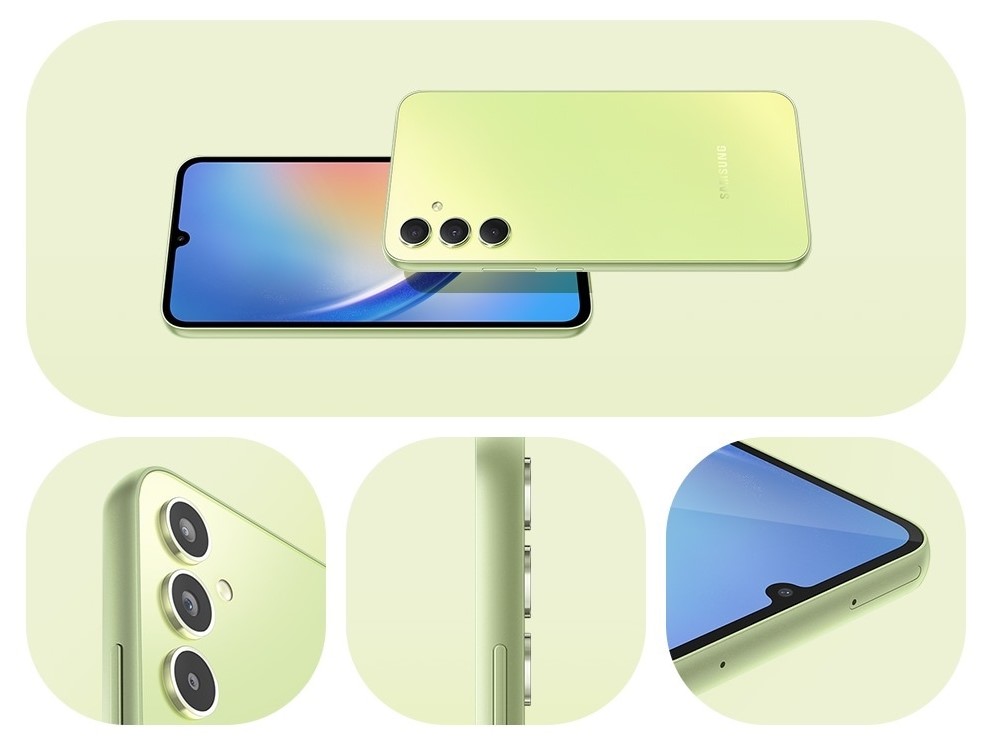
The smartphone has a 5,000mAh battery with 25W fast charging via USB Type-C, it includes multiple sensors and stereo speakers. It is priced at Rs 45,999 for the 8/128GB variant in Nepal. If you are looking for a bit more premium experience and performance, then its sibling, the Samsung Galaxy A54 5G is also a solid option which costs Rs 56,999 for the 8/128GB option and Rs 59,999 for the 8/256GB option.
3. Nothing Phone 2
The Nothing brand, ever since its debut has brought a keen interest in people with the Nothing Phone 1. The Nothing Phone 1 with its glyph interface on the back garnered a hefty attrition. With further improvement and more features, Nothing launched the Nothing Phone 2. The Nothing Phone 2 has a better display, chipset and battery with a bit of a price hike. Most people did not favor the price hike but the software and its features kind of justified. The glyph interface and features are further improved which gets the smartphone on this list of best smartphones of 2023.
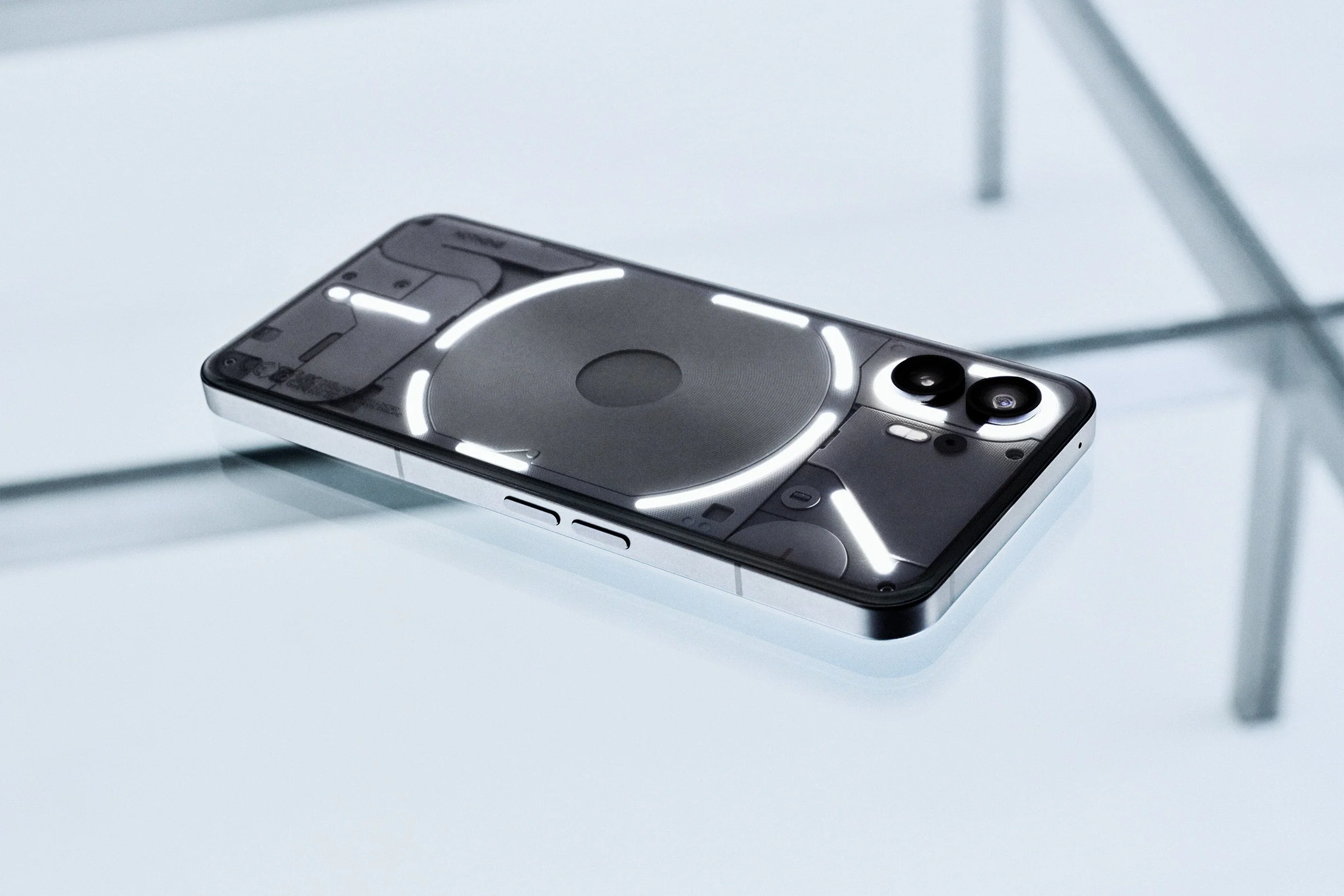
The smartphone is not available officially in Nepal but can be soon expected with other Nohing products with the collaboration of CG with Nothing which was announced in November.
| Dimensions | Height: 162.1 mm Width: 76.4 mm Depth: 8.6 mm Weight: 201.2 g |
| Display size | 6.7-inch |
| Display type | Flexible OLED display with LTPO |
| IP rating | IP54 – splash, water and dust resistant |
| Resolution | 2,412 x 1,080 at 394 ppi |
| Refresh rate | 1-120Hz |
| Chipset | Qualcomm® Snapdragon®™ 8+ Gen 1 (4nm) |
| CPU | 1x X2 Prime3.0GHz 3xA710 2.5GHz 4xA510 1.8GHz |
| GPU | Adreno 730 |
| OS | Nothing OS 2, Android 13 |
| RAM | 8GB | 12GB | 16GB |
| Storage | 128GB | 256GB | 512GB |
| Rear camera | Main: 50 MP Sony IMX890 sensor Ultra-wide: 50MP |
| Selfie camera | 32 MP Sony IMX615 sensor |
| Ports | USB-C |
| Wi-Fi | Wi-Fi 6 |
| Bluetooth | Bluetooth v5.3 |
| SIM | Dual SIM |
| Audio | 3 high definition mics Dual stereo speakers |
| Battery | Li-Ion 4700 mAh, non-removable |
| Charging | 45W wired, PD3.0, PPS, QC4, 100% in 55 min (advertised) 15W wireless, 100% in 130 min (advertised) 5W reverse wireless |
| Sensors | In-display Fingerprint Sensor Front and Rear Ambient Light Sensor Accelerometer Electronic Compass Gyroscope Proximity Sensor Sensor Core |
| Colours | White | Dark Gray |
| Price (expected) | 8/128GB: Rs 76,000 12/256GB: Rs 84,000 12/512GB: Rs 90,000 |
The Nothing Phone 2 has an aluminium frame, a sleek matte finish, and a central hole-punch front camera layout with thin bezels for a premium appearance. It has a 6.7″ flexible OLED display with LTPO technology and HDR10+ support along with adaptive refresh rates from 1Hz to 120Hz. Its innovative Glyph Interface introduces unique light and sound sequences for notifications, minimizing screen dependency while providing practical functionalities.

The smartphone is powered by the Snapdragon 8+ Gen 1 chipset and Nothing OS 2.0 based on Android 13. The customisation options along with the software features have further made the Nothing Phone 2 a great option. It features a rear dual-camera setup with a 50MP main camera and a 50MP ultra-wide camera. It has a 4,700mAh battery with 45W wired charging, Wi-Fi 6, Bluetooth v5.3, and dual SIM support. It is available in White and Dark Gray colour options.
4. Xiaomi Note 13 Pro+
The Note series from Xiaomi is always a hit. The Note series is typically available in three versions, a base version, a slightly better Pro version and a much better Pro+ version. Last year’s successor of the Note 12 series was official in China in September with the launch of the Xiaomi Note 13, Note 13 Pro and the Note 13 Pro+. The Note 13 Pro+ is one to look at here.
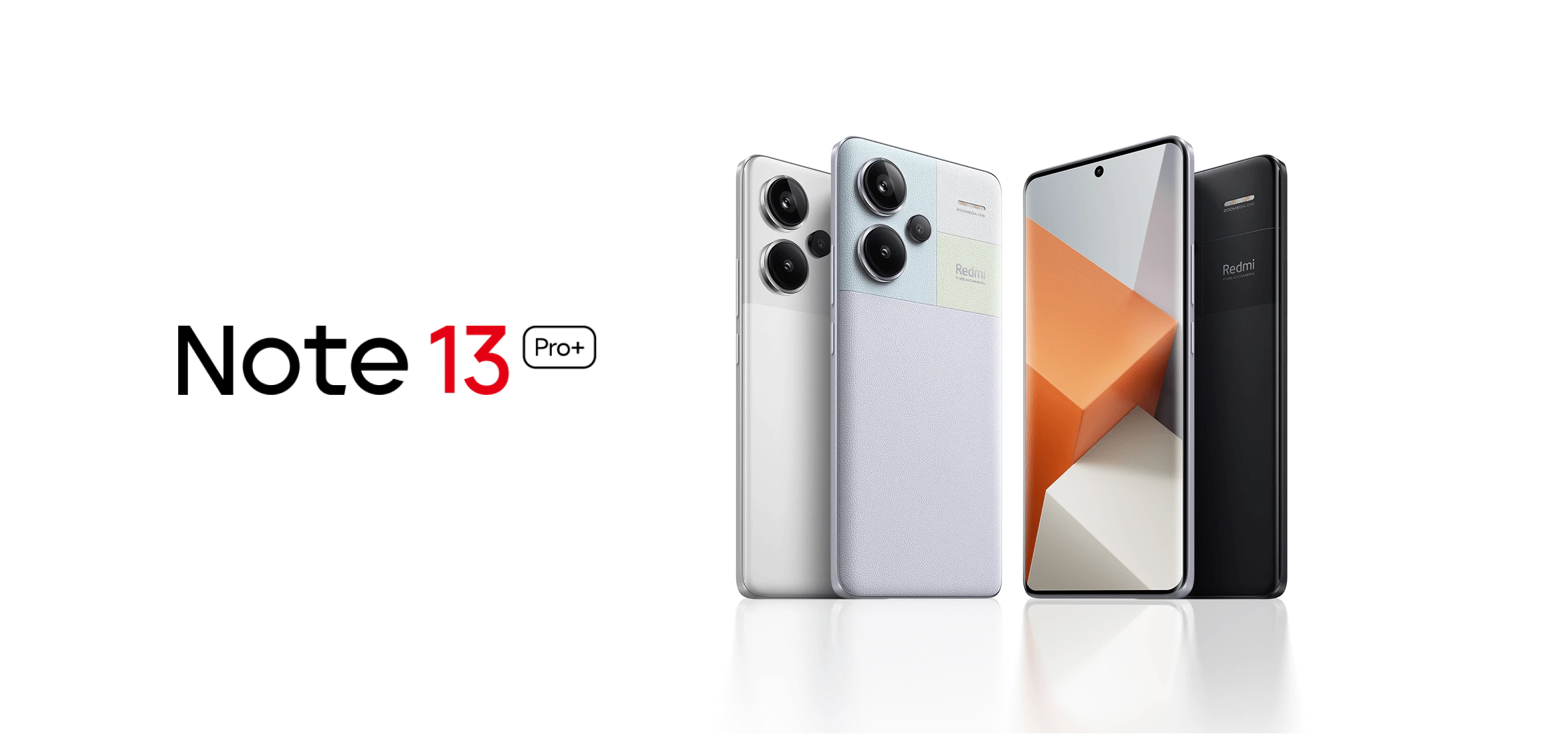
The Note 13 series is currently unavailable in Nepal, but it is anticipated to arrive around the end of January or early February, considering its launch scheduled for the first week of January in India.
| Dimensions | Length: 161.4mm Width: 74.2mm Thickness: 8.9mm (Midnight dark and Mirror white) 9mm (Light Dream Space) |
| Weight | 204.5 grams (Midnight dark and Mirror white) 199 grams (Light Dream Space) |
| Display size | 6.67-inch |
| Display type | OLED |
| Resolution | 2,712 x 1,220 pixels |
| Refresh rate | 120 Hz |
| IP rating | IP68 dust and water resistance |
| Glass protection | Corning Gorilla Glass Victus |
| Chipset | Mediatek Dimensity 7,200 Ultra (4 nm) |
| CPU | Octa-core (2×2.8 GHz Cortex-A715 & 6×2.0 GHz Cortex-A510) |
| GPU | Mali-G610 MC4 |
| OS | Android 13, MIUI 14 |
| RAM | 12GB | 16GB |
| Storage | 256GB | 512GB |
| Rear camera | Main camera: 200MP Samsung HP3 sensor Ultra-wide camera: 8MP Macro camera: 2MP |
| Selfie camera | 16MP |
| Wi-Fi | Wi-Fi 6, Wi-Fi 5, Wi-Fi 4 and 802.11a/b/g |
| Bluetooth | 5.3 |
| SIM | Dual SIM (Nano-SIM, dual stand-by) |
| Audio | Stereo dual speakers |
| Sensors | Ultrasonic distance sensor | Ambient light sensor | Acceleration sensor | Electronic compass | Gyroscope | Infrared remote control | X-axis linear motor |
| Battery | 5,000mAh (typ) |
| Charging | 120W wired fast charging |
| Colours | Midnight Dark Mirror White Light Dream Space |
| Price (expected) | Rs 42,000 (12/256GB) Rs 46,000 (12/512GB) Rs 50,000 (16/512GB) |
The Redmi Note 13 Pro+ has a new and refined design with three colour variants, offering a glass back with a dual-tone finish in Black and White or a vegan leather option in Light Dream Space. It has a curved 6.67-inch OLED display with a 120Hz refresh rate, Dolby Vision, HDR10+, and a peak brightness of 1,800 nits. It is powered by the MediaTek Dimensity 7200 Ultra chipset, coupled with 12GB or 16GB RAM and storage options ranging from 256GB to 512GB.
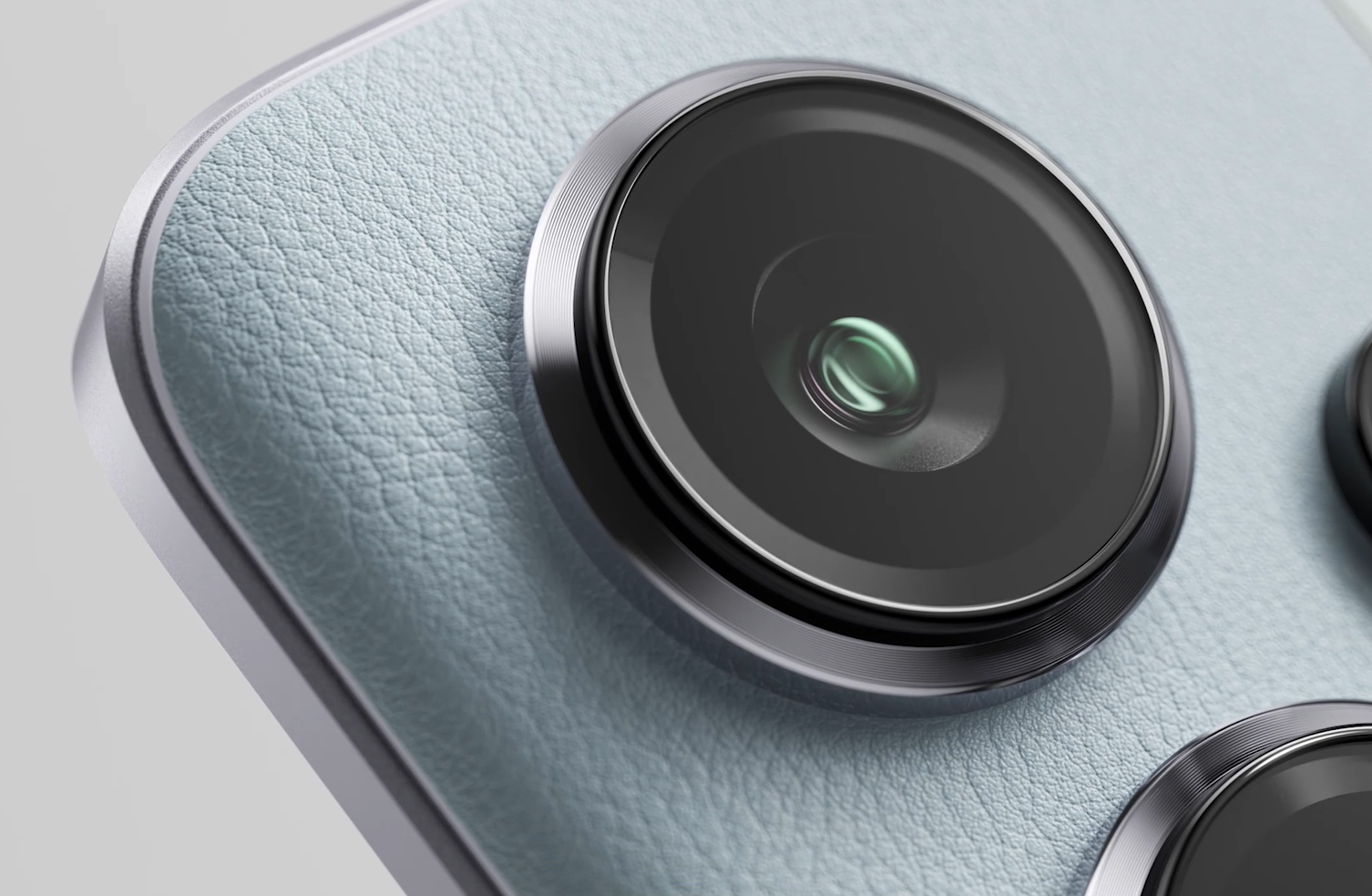
The smartphone has a triple rear camera setup with a 200MP main camera with OIS and EIS, an 8MP ultra-wide lens and a 2MP macro lens while the 16MP front camera takes care of selfies and videos. It has a 5,000mAh battery with ultra-fast 120W wired charging, Wi-Fi 6 connectivity, Bluetooth 5.3, dual SIM support, stereo speakers, and a wide range of sensors.
5. ASUS Zenfone 10
Most of the smartphones nowadays are big. Small and light phones in a compact form factor are quite rare with all the flagship capabilities and performance. One of the very few brands that still make a compact smartphone is ASUS with its Zenfone lineup. ASUS mostly known for its ROG series gaming phones is also popular for its Zenfone lineup. The ASUS Zenfone 10 is the best compact phone with few upgrades from its predecessor. The Zenfone 10 is not available in Nepal.
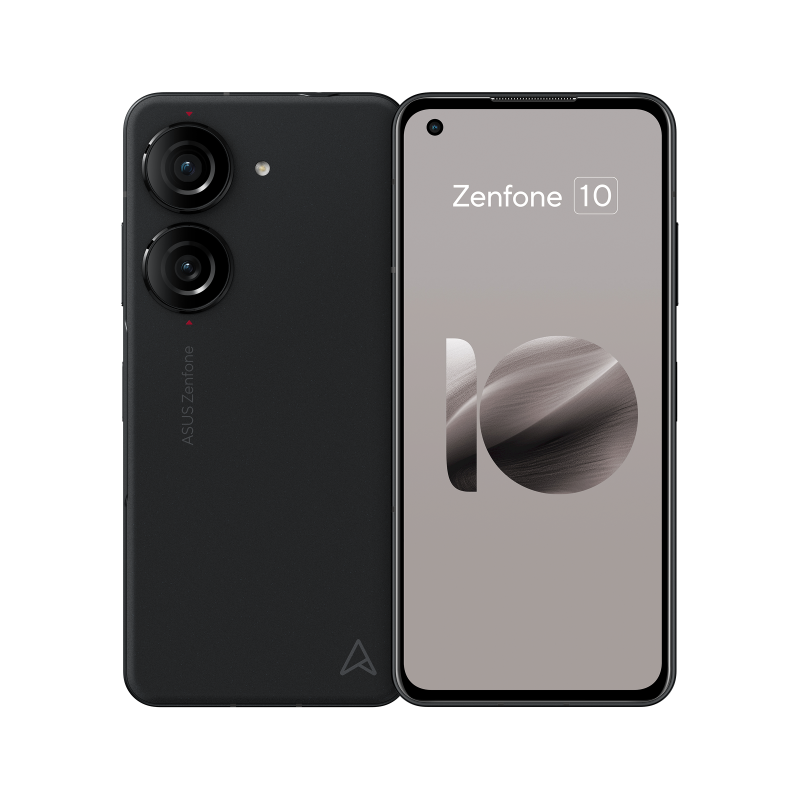
| Dimensions | 172g, 146.5 x 68.1 x 9.4 mm |
| Weight | 172 grams |
| Display size | 5.9-inch |
| Display type | Super AMOLED |
| Resolution | 2,400 x 1,080 |
| Refresh rate | 144 Hz* |
| IP rating | IP68 dust/water resistant |
| Glass protection | Corning® Gorilla® Glass Victus® |
| Chipset | Qualcomm Snapdragon 8 Gen2 (4 nm) |
| CPU | Qcta-core CPU 1×3.2 GHz Cortex-X3 & 2×2.8 GHz Cortex-A715 & 2×2.8 GHz Cortex-A710 & 3×2.0 GHz Cortex-A510 |
| GPU | Qualcomm Adreno 740 |
| OS | Android 13 |
| RAM | 8GB | 16GB |
| Storage | 128GB | 256GB | 512GB |
| SIM | Dual SIM |
| Rear camera | Main camera: 50 MP Sony® IMX766 sensor Ultrawide Camera: 13 MP sensor |
| Selfie camera | 32 MP sensor (Uses pixel binning to output 8MP image) |
| Wi-Fi | 802.11 be/ax/ac/a/b/g/n |
| Bluetooth | 5.3 |
| Audio | Dual stereo speakers Microphones: 2 3.5mm headphone jack |
| Battery | 4,300mAh |
| Charging | 30W wired Support 15W wireless charging 5W reverse wired |
| Sensors | Accelerator E-Compass Proximity Ambient light sensor Fingerprint sensor Gyro (Support ARCore) Hall sensor |
| Colours | Midnight Black Comet White Eclipse Red Aurora Green Starry Blue |
| Price (expected) | 8/128GB: Rs 123,000 8/256GB: Rs 130,000 16/512GB: Rs 144,000 |
The Asus Zenfone 10 has a compact design with a textured polycarbonate back and a metal frame, with a dual-camera setup and a slightly raised bump. It features a 5.9-inch Samsung AMOLED display with a high refresh rate of 144Hz, with 2,400 x 1,080 resolution and brightness of 1,100 nits. The smartphone is protected by Corning Gorilla Glass Victus and has IP58 dust and water resistance. It is powered by the Snapdragon 8 Gen2 chipset, it offers configurations of 8GB or 16GB RAM with storage options up to 512GB. Its dual-camera system includes a 50MP main sensor and a 13MP ultrawide lens with a 32MP selfie camera on the front.
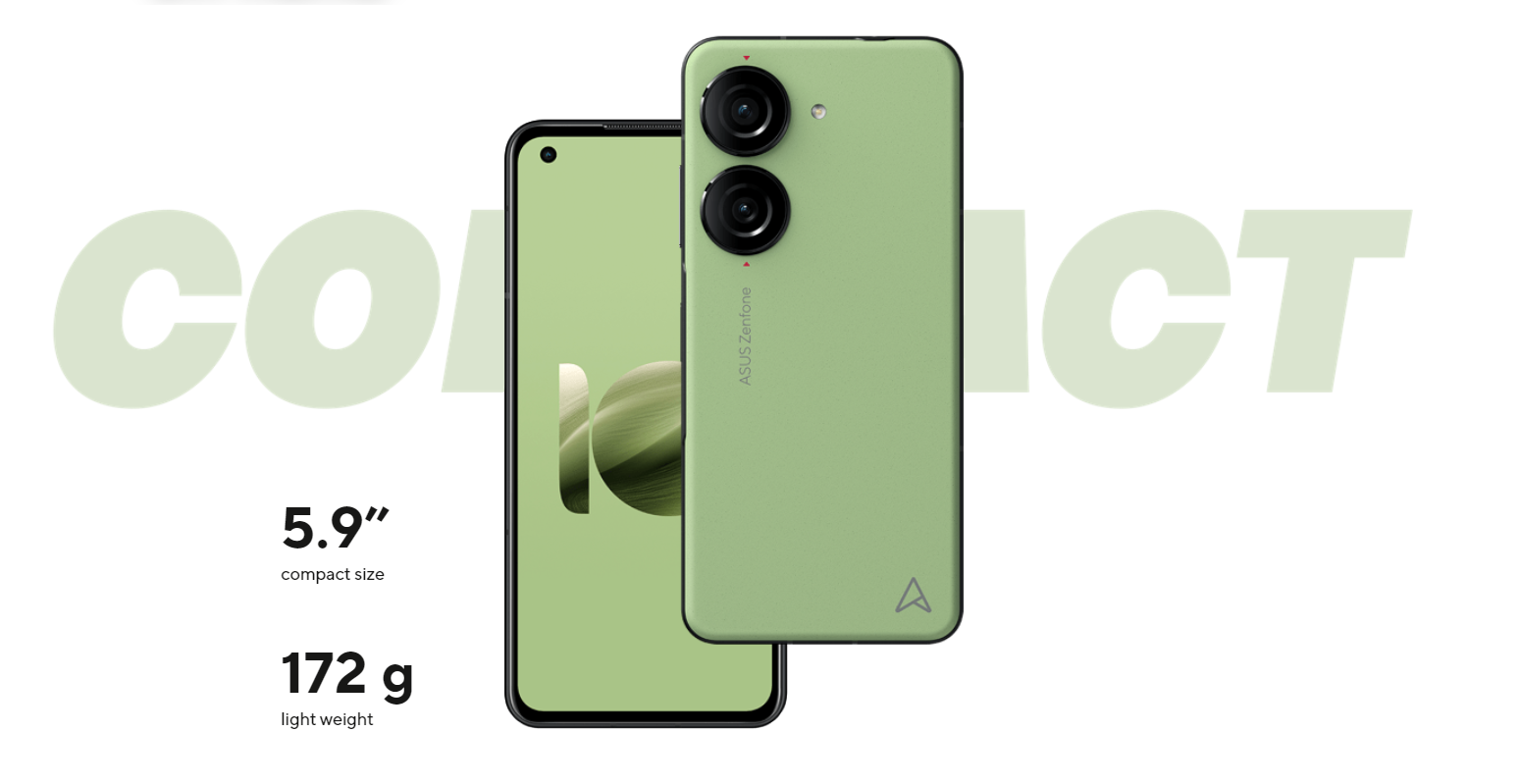
The smartphone has a 4300mAh battery supporting 30W wired charging, 15W wireless charging, and various connectivity options like Wi-Fi 6 and Bluetooth 5.3. It is available in Midnight Black, Comet White, Eclipse Red, Aurora Green, and Starry Blue colour options.
7. Google Pixel 7a
An improved premium mid-range option with software features to the brim is the Google Pixel 7a. The successor of the Pixel 6a got a wide range of appreciation and recommendations in its price range. Sadly the smartphone is not available in Nepal. The Pixel 7a software features, camera, performance, display and chipset are some of the best in its price segment. The smartphone is slightly more expensive than its predecessor but is justified with all the features and specs it delivers.
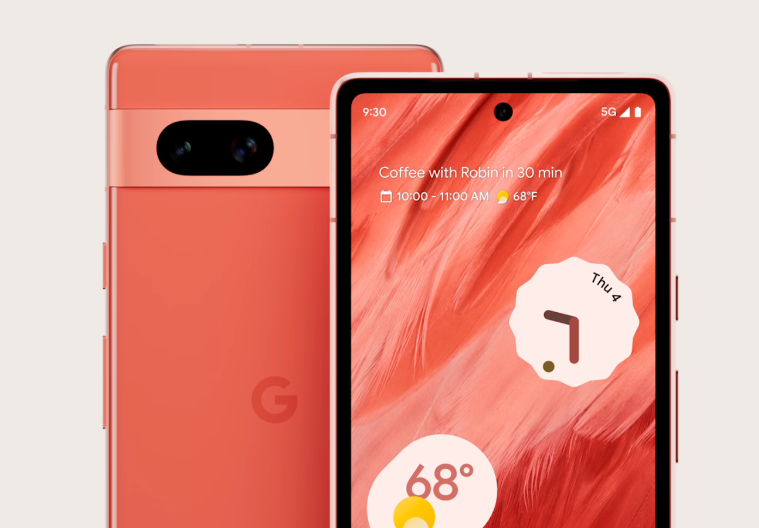
| Dimensions | Height: 152mm Width: 72.9mm Thickness: 9mm Weight: 193.5 grams |
| Display size | 6.1-inch |
| Display type | OLED |
| Sim | Dual sims (one physical sim and one e-sim) |
| Resolution | 1 080 X 2,400 pixels (FHD+) |
| OS | Android 13 |
| Chipset | Google Tensor G2 (5nm) |
| GPU | Mali-G710 MP7 |
| RAM | 8GB |
| Storage | 128GB |
| SD card slot | No |
| Rear camera | 64MP main camera 13MP ultrawide camera |
| Sound | Stereo speakers No 3.5mm headphone jack |
| Wi-Fi | Wi-Fi 6E (802.11ax) with 2.4 GHz + 5 GHz + 6 GHz |
| Bluetooth | Bluetooth® v5.3 + LE |
| Battery | Li-Po 4385 mAh, non-removable |
| Charging | 18W wired 7.5W wireless |
| Sensors | Under-display fingerprint sensor Proximity sensor Ambient light sensor Accelerometer Gyrometer Magnetometer Barometer |
| Colours | Coral | Sea | Charcol | Snow |
| Price (expected) | Rs 78,000 (8/128GB) |
The Google Pixel 7a inherits design inspiration from the Pixel 7 series with a plastic back, a marginally smaller size, and thicker front bezels. It features a 6.1-inch OLED display with a 90Hz refresh rate and Corning Gorilla Glass 3 protection. It is powered by the Google Tensor G2 chipset and has 8GB RAM and 128GB internal storage but lacks expandable storage options. The smartphone includes a dual-camera setup with a significant enhancement in sensor size, offering a 64MP main camera and a 13MP ultrawide lens, supporting a wide range of photography features and 4K video recording capabilities.
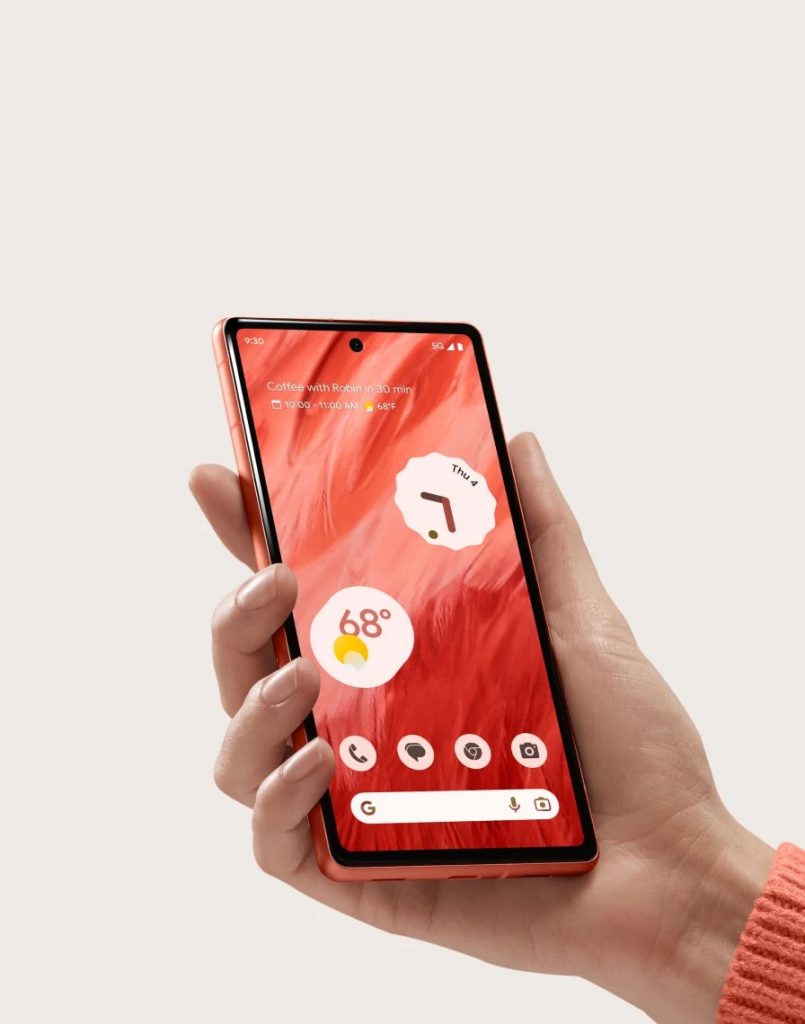
It is equipped with a 4,385mAh battery supporting 18W wired and 7.5W wireless charging. The smartphone has IP67 water resistance, an under-display fingerprint sensor, stereo speakers, and Wi-Fi 6E connectivity. It is available in coral, sea, charcoal, and snow colour options.
8. ASUS ROG Phone 7 Ultimate
Gaming phones and ASUS are always a perfect combination. A perfect gaming flagship is the ASUS ROG Phone 7 Ultimate. Launched in May alongside the ROG Phone 7, both smartphones are quite the gaming beast. Both smartphones bring notable upgrades from their predecessors, the ROG 6 and ROG 6 Pro. Both models share similar specifications but diverge in certain aspects like the presence of an external back display, cooling mechanisms, and pricing. ASUS’s gaming phones gather proper attention upon release with the specs and unique design, placing them in a league of their own within mobile gaming.
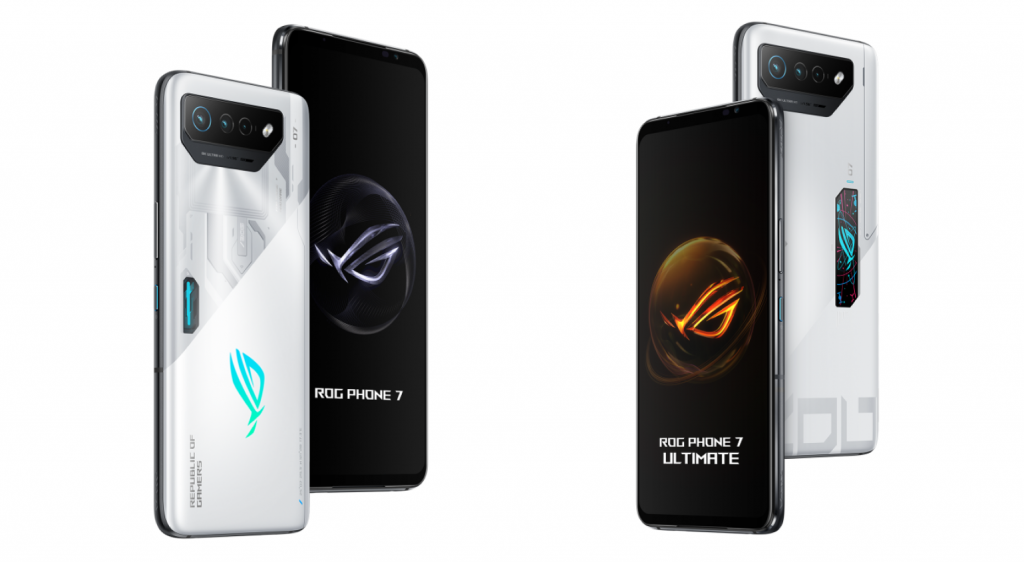
| Dimensions | 173 x 77 x 10.3 mm |
| Display size | 6.78-inch |
| Display type | Samsung AMOLED |
| Refresh rate | 165Hz |
| Resolution | 2,448 x 1,080 pixels |
| OS | Android 13 |
| Chipset | Qualcomm Snapdragon 8 Gen2 |
| GPU | Qualcomm Adreno 740 |
| RAM | LPDDR5X 16GB |
| Storage | UFS4.0 512GB |
| Selfie camera | 32 MP |
| Rear camera | Main camera: 50MP (Sony IMX766 sensor) Ultra-wide camera: 13MP Macro camera: 5MP |
| Audio | Speaker: Symmetrical dual front-facing speakers with Dirac HD Sound 5-magnet stereo speaker with Cirrus Logic amplifier for louder, deeper and less distorted sound effect Audio output: Hi-res audio up to 384 kHz / 32-bit for 3.5mm output Qualcomm WCD9385 for hi-res output AudioWizard with multiple listening profiles Dirac Virtuo for Headphone™ Spatial Sound Microphone: Tri-microphones with ASUS noise reduction technology |
| Sim cards | Dual slots: Dual sims / Dual-Standby support Slot 1: 5G/4G/3G/2G Nano sim card Slot 2: 5G/4G/3G/2G Nano sim card |
| Sensor | In-display fingerprint sensor, face recognition, accelerometer, e-compass, gyroscope, proximity sensor, ambient light sensor, ultrasonic sensors for AirTrigger and grip press |
| Battery | 6,000mAh (typical) |
| Power adapter | USB power adapter (65-Watt) |
| Colours | Storm white |
| Price (expected) | Rs 190,000 (16/512GB) |
The ASUS ROG Phone 7 Ultimate main highlight is its captivating back display and dedicated cooling fan. The 2-inch OLED back display showcases customizable options and useful details like battery status and X-mode activation. The Aeroactive Portal contribute to its design and functionality, ensuring efficient cooling when paired with the AeroActive Cooler 7 attachment. It has a 6.78-inch Samsung AMOLED display with a massive 165Hz refresh rate. It is powered by the Snapdragon 8 Gen2 chipset, Adreno 740 GPU, 16GB LPDDR5X RAM, and 512GB storage for performance and efficiency.
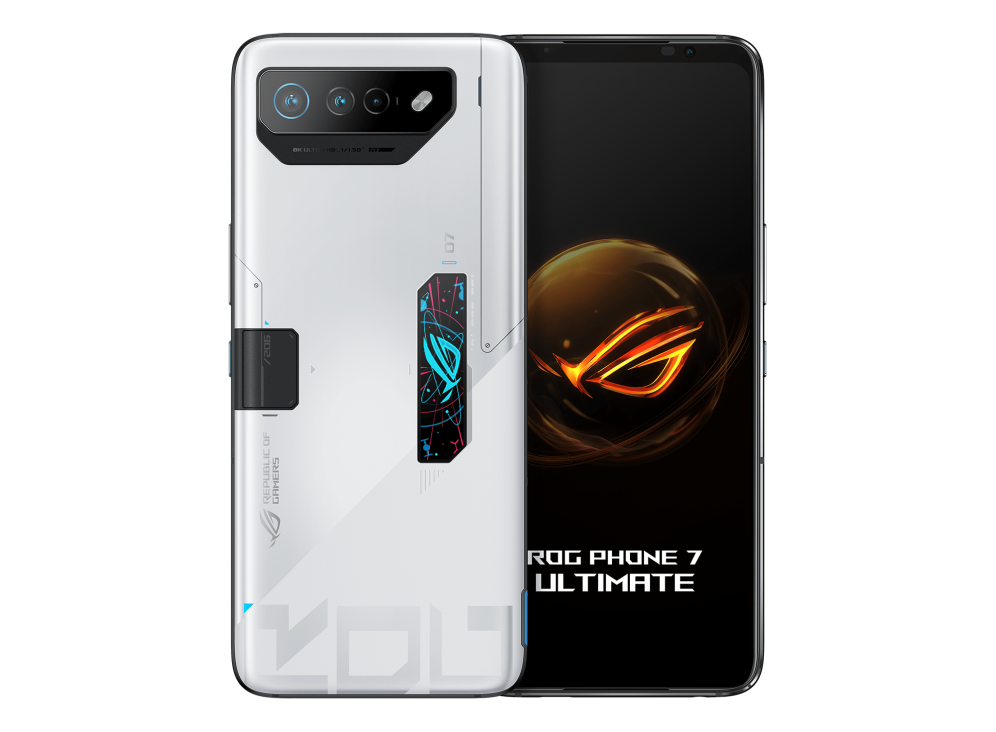
Additionally, the smartphone with the vapour cooling system and dedicated cooler helps improve gaming performance. It has the biggest battery in flagship smartphones this year with a 6,000 mAh cell which can be charged using a 65W wired fast charger. It is available in one colour option Storm white.
9. Samsung Galaxy Z Flip5
The Flip and Foldable smartphone market was quite interesting with many smartphone brands getting their hands on it. Motorola’s Razr 40 Ultra got a lot of attention with what a Flip smartphone can be. But Samsung, the one who had been in the Flip market with the improvements in the Samsung Galaxy Z Flip5 garnered more attention. The smartphone addressed previous issues like the hinge and smaller cover screen which was changed with a larger cover display, an improved hinge for a completely flat fold and software features that made it clear in the Flip market. The smartphone is available in Nepal and has got some decent attention.
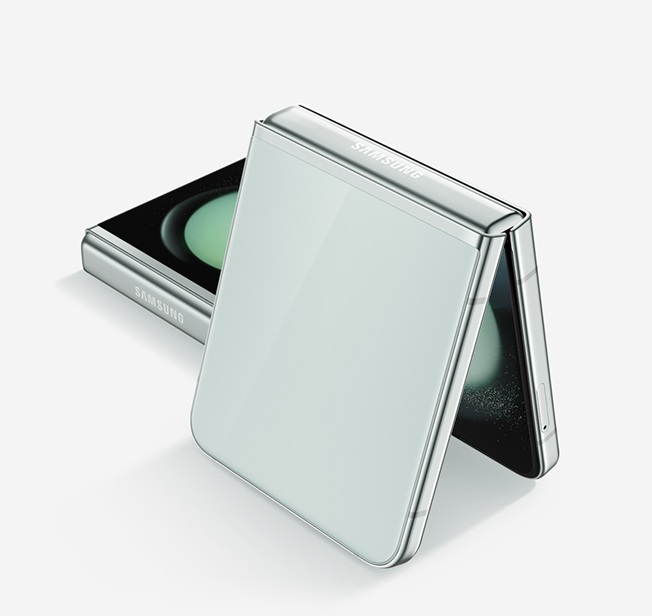
| Dimensions | Unfolded: 165.1 x 71.9 x 6.9 mm Folded: 85.1 x 71.9 x 15.1 mm Weight: 187 grams |
| Display size | Main screen: 6.7-inch Cover screen: 3.4-inch |
| Display type | Main screen: Foldable Dynamic AMOLED 2X Cover screen: Super AMOLED (Flex Window) |
| Resolution | Main screen: 2,640 x 1,080 pixels Cover screen: 720 x 748 pixels |
| Glass Protection | Main screen: Gorilla Glass Victus 2 Cover Screen: Gorilla Glass Victus 2 |
| IP rating | IPX8 water resistance |
| OS | Android 13, One UI 5.1.1 |
| Chipset | Qualcomm Snapdragon 8 Gen 2 (4nm) |
| CPU | Octa-core (1×3.36 GHz Cortex-X3 & 2×2.8 GHz Cortex-A715 & 2×2.8 GHz Cortex-A710 & 3×2.0 GHz Cortex-A510) |
| GPU | Adreno 740 |
| RAM | 8 GB |
| Storage | 256GB |
| Main camera | 12MP, f/1.8, 24mm wide, Dual pixel PAF, OIS 12MP, f/2.2, 123 degrees ultrawide |
| Selfie camera | 10MP, f/2.2, 26mm wide |
| Wi-Fi | Wi-Fi 802.11 a/b/g/n/ac/6e |
| Bluetooth | 5.3 |
| Battery | Li-Po 3700 mAh, non-removable |
| Charging | 25W wired 15W wireless 4.5W reverse wireless |
| Sensors | Side-mounted fingerprint sensor Accelerometer Barometer Gyro Proximity Compass Samsung Pay (Visa, MasterCard certified) |
| Colours | Lavender | Graphite | Mint |
| Price | Rs 139,999 (8/256GB) |
The Samsung Galaxy Z Flip5 has key improvements in design and functionality, notably the upgraded hinge that allows the smartphone to fold completely flat, a larger Flex Window cover screen for enhanced use when folded, and improvements in camera capabilities. It has a 6.7-inch Foldable Dynamic AMOLED 2X panel with a 120Hz refresh rate and HDR10+. The flagship Snapdragon 8 Gen 2 chipset ensures powerful performance along with Adreno 740 GPU. The smartphone is available in one memory option of 8GB RAM paired with 256GB storage.
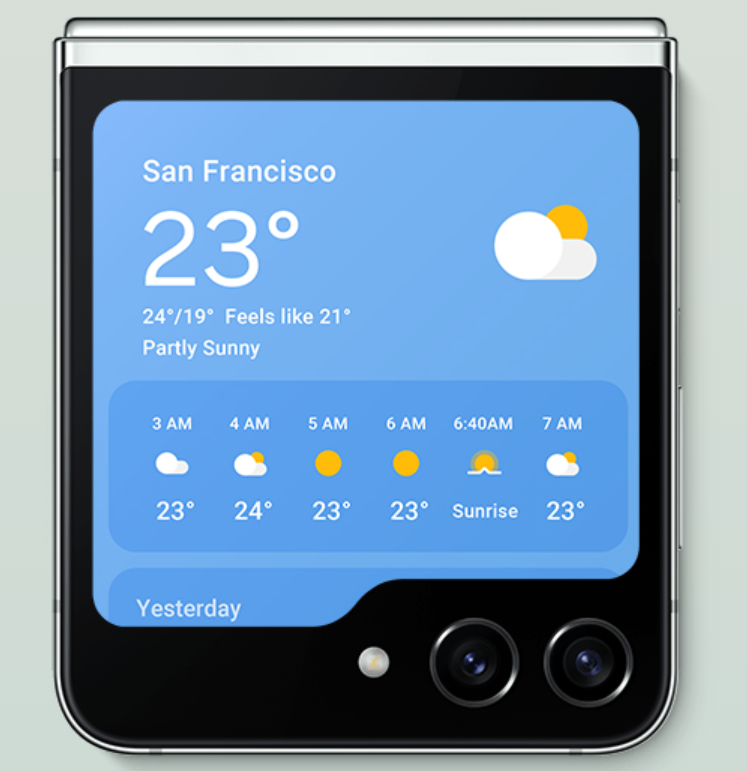
The flip smartphone is equipped with a dual-camera setup with a 12MP main camera and 12MP ultra-wide camera on the back and a 10 MP selfie camera on the front. It has a 3,700 mAh battery which supports wired and wireless charging. It is available in three colour options; Lavender, Graphite and Mint. The available 8/256GB option of the Samsung Galaxy Flip5 in Nepal costs Rs 139,000.
9. OnePlus Open
Foldable smartphones are also getting highly competitive with a bunch of them introduced this year. Samsung continued with the fifth-generation foldable smartphone, the Samsung Galaxy Z Fold5. Honor introduced its second-generation foldable smartphone, the Honor Magic V2 which is the thinnest foldable smartphone at just 9.9mm thick. Xiaomi’s third-generation foldable, the Xiaomi Mix Fold 3 was also headline for some time. Google also got into the foldable smartphone with the introduction of the Google Pixel Fold, but let us not go there. Tecno also introduced its first foldable smartphone, the Tecno Phantom V Fold.
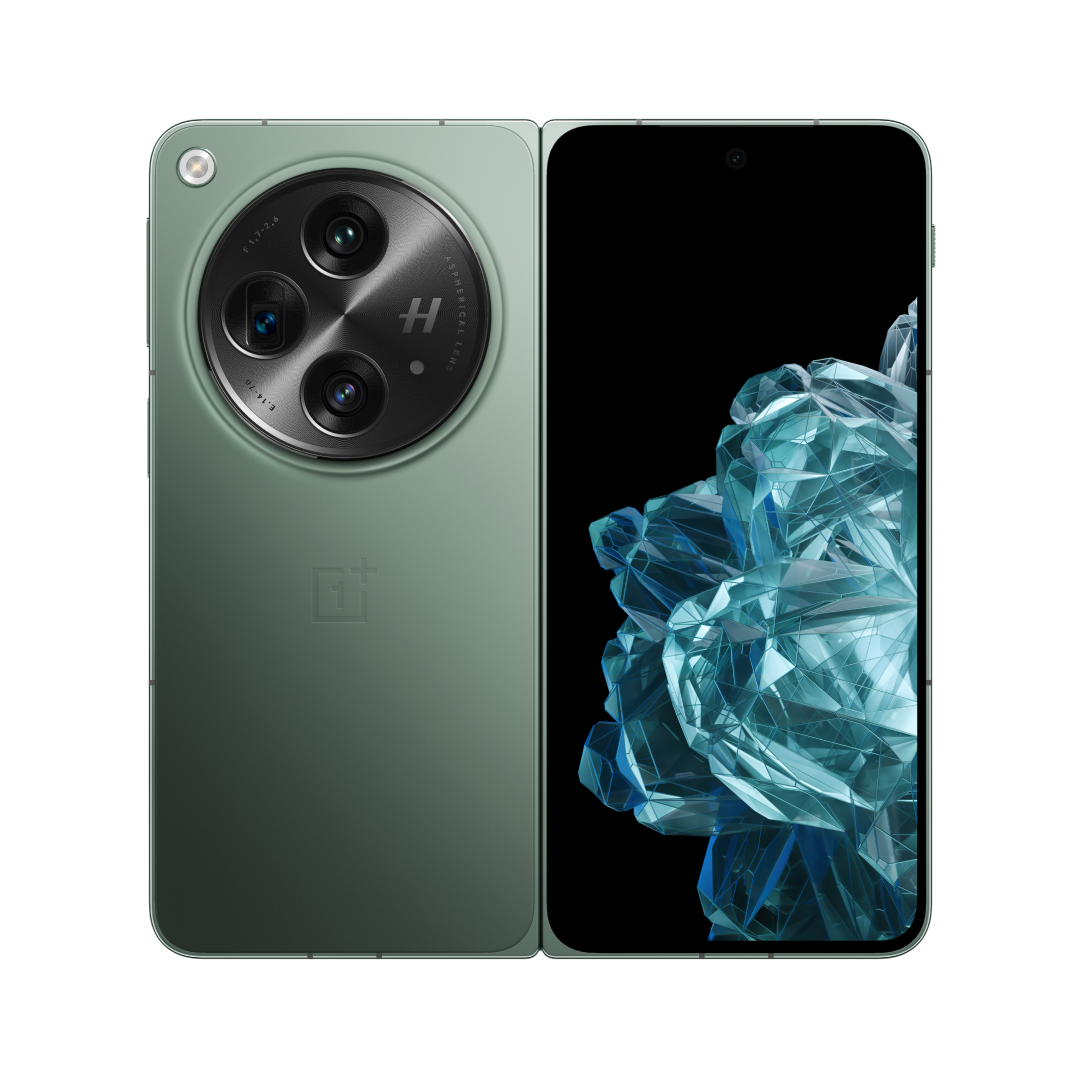
But then comes OnePlus with its first try in the foldable smartphone with the OnePlus Open which just made it clear what a foldable smartphone should be. The Samsung Galaxy Z Fold5 with the improved hinge and other notable upgrades is still a pretty good option. But the OnePlus Open with all the features, camera and specs is outstanding. Yes, there are a few things such as IP rating and charging that can be improved but it covers with rest of the features.
| Dimensions | When opened Height: 153.4 mm Width: 143.1 mm Thickness: 5.8 mm (Emerald Dusk variant) Thickness: 5.9 mm (Voyager Black variant) When closed Height: 153.4 mm Width: 73.3 mm Thickness: 11.7 mm (Emerald Dusk variant) Thickness: 11.9 mm (Voyager Black variant) |
| Weight | Voyager Black: 239g Emerald Dusk: 245g |
| Display type | Main display: Flexi-fluid AMOLED with LTPO 3.0 Cover display: Super Fluid AMOLED with LTPO 3.0 |
| Display size | Main display: 7.82-inch Cover display: 6.31-inch |
| Resolution | Main display: 2,440 x 2,268, 426 ppi Cover display: 2,484 x 1,116, 431 ppi |
| Refresh rate | Main display: 1-120 Hz dynamic Cover display: 10-120 Hz dynamic |
| IP rating | IPX4 splash resistant |
| Chipset | Qualcomm® Snapdragon™ 8 Gen 2 Mobile Platform |
| CPU | Octa-core (1×3.2 GHz Cortex-X3 & 2×2.8 GHz Cortex-A715 & 2×2.8 GHz Cortex-A710 & 3×2.0 GHz Cortex-A510) |
| GPU | Adreno 740 |
| OS | Android 13, OxygenOS 13.2 |
| RAM | 16 GB |
| Storage | 512 GB |
| Rear camera | Main camera: 48MP Sony LYT-T808 sensor Telephoto camera: 64MP OmniVision OV64B sensor Ultrawide camera: 48MP Sony IMX581 sensor |
| Selfie camera | Main display: 20MP Cover display: 32MP |
| Wi-Fi | Wi-Fi 802.11 a/b/g/n/ac/6e/7 |
| Bluetooth | 5.3 |
| Audio | Stereo Speakers Noise cancellation support Dolby Atmos® |
| SIM | Dual nano-SIM |
| Sensors | Side-mounted Fingerprint Sensor Accelerometer M-sensor Electronic Compass Gyroscope Ambient Light Sensor Proximity Sensor Sensor Core Flick-detect Sensor Infrared Sensor |
| Battery | 4,805 mAh (Dual-cell, 3295+1510 mAh, non-removable) |
| Charging | 67W SUPERVOOC Charging |
| Colours | Emerald Dusk | Voyager Black |
| Price (expected) | Rs 244,000 (16/512GB) |
The OnePlus Open has a sleek design with a circular camera setup at the back and comes in two colour options, Emerald Dusk and Voyager Black. It’s foldable, but when closed, it’s not bulky like other foldable smartphones, giving a normal smartphone feel. The hinge stands out with the gapless design which is made up of titanium alloy, carbon fibre and cobalt molybdenum alloy and certified folds of up to 1,000,000 folds.

The main display is 7.82 inches, like a mini-tablet with Flexi-fluid AMOLED technology and peak brightness of up to 2,800 nits. The cover screen is like a regular phone display, 6.31 inches with Super Fluid AMOLED technology. Under the hood is the Snapdragon 8 Gen 2 chipset, 16GB RAM, and up to 28GB of virtual RAM. It is paired with a massive 512GB storage.
The OnePlus Open has a rear triple camera setup: a 48MP main sensor, a 64MP telephoto lens, and a 48MP ultrawide lens. For selfies, it features a 20MP front camera on the main display and a 32MP camera on the cover display. The OnePlus Open also packs a 4805mAh dual-cell battery, 67W fast charging, and boasts stereo speakers with Dolby Atmos® for enhanced audio.
10. Apple iPhone 15 and 15 Pro series
A best smartphone list without Apple’s iPhone is always incomplete. This year’s iPhone 15 series was one of the heated topics with the introduction of the 15 series. Similar to recent years, Apple has introduced four smartphones: the iPhone 15, iPhone 15 Plus, iPhone 15 Pro, and iPhone 15 Pro Max. With few notable changes and upgrades, the iPhone 15 series is quite the best option if price is not a factor.
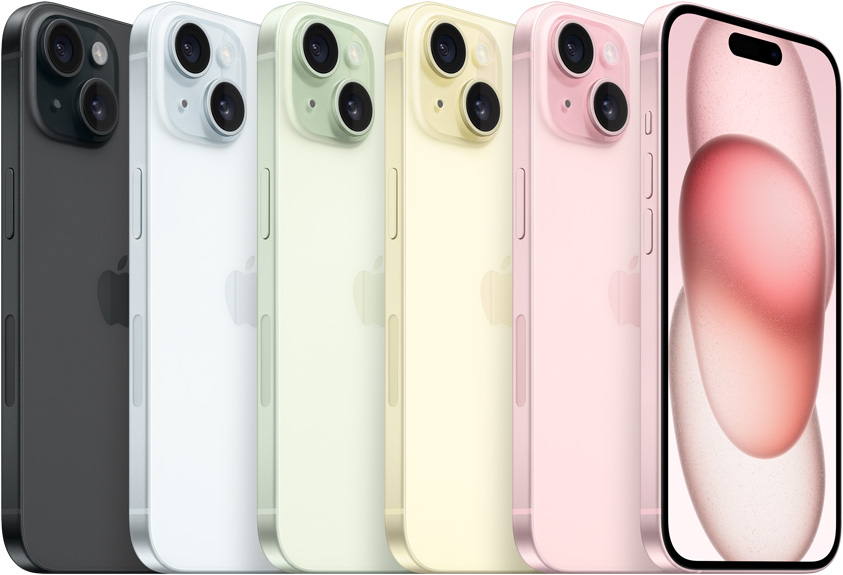
The iPhone 15 base options with the iPhone 15 and 15 Plus got decent upgrades whereas the Pro series including the 15 Pro and 15 Pro Max got a better chipset, camera and display features. The base options and the Pro options can be notably distinguished along with the price. One of the main highlights of the whole 15 series is the change of lighting port to the Universal Type C cable. The Pro versions also have a Titanium build for extra durability.
Among the four options, the iPhone 15 Plus got more appreciation in the battery department. The 15 Plus with a bigger battery and last year’s A16 Bionic chipset and optimization has been loved by many.
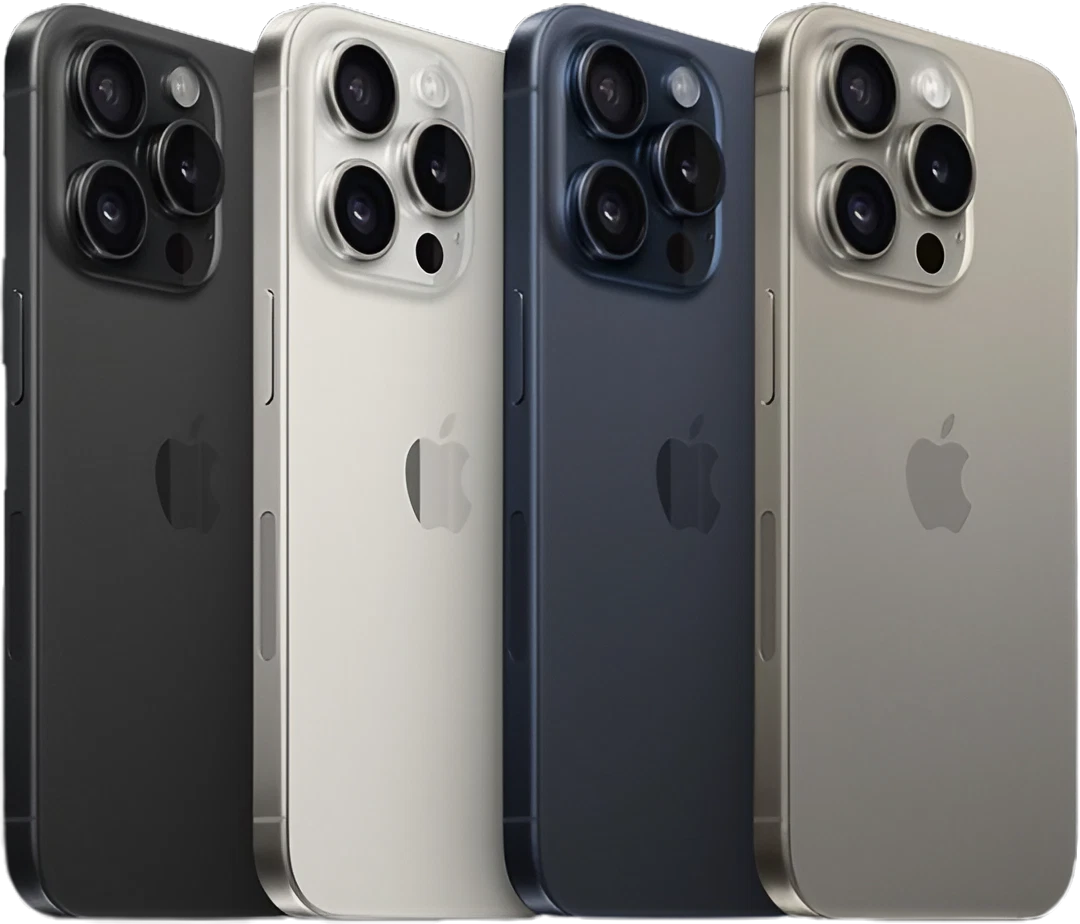
The 15 Pro series got the new A17 Pro chipset. The A17 Pro chipset is the world’s first 3nm chipset. As for the Pro series, they differ primarily in display size, camera and USB Type-C speed, with Pro featuring 6.12-inch and Pro Max at 6.69-inch displays. Pro has USB Type-C 3.0, while Pro Max comes with USB Type-C 2.0. Additionally, Pro Max offers enhanced zoom capabilities in its triple-camera setup and storage options starting from 256 GB.
Specifications of Apple iPhone 15 and iPhone 15 Plus
| Dimensions | iPhone 15 Height: 147.6mm Width: 71.6mm Depth: 7.80mm iPhone 15 Plus Height: 160.9mm Width: 77.8mm Depth: 7.80mm |
| Weight | 15: 171 grams 15 Plus: 201 grams |
| Display type | Super Retina XDR display OLED display |
| Display size | 15: 6.1-inch 15 Plus: 6.7-inch |
| Resolution | 15: 2,556 x 1,179 pixels at 460 ppi 15 Plus: 2,796 x 1,290 pixels at 460 ppi |
| Brightness | 1,000 nits max brightness (typical) 1,600 nits peak brightness (HDR) 2,000 nits peak brightness (outdoor |
| IP rating | IP68 dust/water resistant |
| Chipset | A16 Bionic chip |
| CPU | Hexa-core (2×3.46 GHz Everest + 4×2.02 GHz Sawtooth) |
| GPU | 5‑core GPU |
| OS | iOS 17 |
| RAM | 6 GB |
| Storage | 128 GB | 256 GB | 512 GB |
| Rear camera | 48MP Main: 26 mm, ƒ/1.6 aperture, sensor‑shift optical image stabilization, 100% Focus Pixels, support for super-high-resolution photos (24MP and 48MP) 12MP Ultra Wide: 13 mm, ƒ/2.4 aperture and 120° field of view |
| Selfie camera | 12MP camera ƒ/1.9 aperture |
| Wi-Fi | Wi-Fi 802.11 a/b/g/n/ac/6, dual-band |
| Bluetooth | 5.3 |
| Audio | Stereo speakers |
| USB | USB Type-C 2.0 |
| Sensors | Face ID Barometer High dynamic range gyro High-g accelerometer Proximity sensor Dual ambient light sensors |
| Battery | lithium-ion battery |
| Charging | USB Type-C Wired 15W wireless (MagSafe) 7.5W wireless (Qi) |
| Colours | Black | Blue | Green | Yellow | Pink |
The price of the iPhone 15 and iPhone 15 Plus in Nepal are as follows:
| Model | Price |
| iPhone 15 | 128GB: Rs 157,500 256GB: Rs 176,500 512GB: Rs 214,500 |
| iPhone 15 Plus | 128GB: Rs 176,500 256GB: Rs 195,500 512GB: Rs 233,500 |
Specifications of Apple iPhone 15 Pro and iPhone 15 Pro Max
| Dimensions | 15 Pro Height: 146.6mm Width: 70.6mm Depth: 8.25mm 15 Pro Max Height: 159.9mm Width: 76.7mm Depth: 8.25mm |
| Weight | 15 Pro: 171 grams 15 Pro Max: 201 grams |
| Display type | Super Retina XDR display OLED display |
| Display size | 15 Pro: 6.1-inch 15 Pro Max: 6.7-inch |
| Resolution | 15: 2,556 x 1,179 pixels at 460 ppi 15 Plus: 2,796 x 1,290 pixels at 460 ppi |
| Brightness | 1,000 nits max brightness (typical) 1,600 nits peak brightness (HDR) 2,000 nits peak brightness (outdoor |
| IP rating | IP68 dust/water resistant |
| Chipset | A17 Pro Bionic chip |
| CPU | Hexa-core (2×3.78 GHz + 4) |
| GPU | 5‑core GPU |
| OS | iOS 17 |
| RAM | 8 GB |
| Storage | 128 GB | 256 GB | 512 GB | 1 TB |
| Rear camera | 15 Pro: 48MP Main: 24 mm, ƒ/1.78 aperture 12MP Ultra Wide: 13 mm, ƒ/2.2 aperture and 120° field of view 12 MP Telephoto: f/2.8, 77mm, 3x optical zoom 15 Pro Max: 48MP Main: 24 mm, ƒ/1.78 aperture 12MP Ultra Wide: 13 mm, ƒ/2.2 aperture and 120° field of view 12 MP Periscope Telephoto: f/2.8, 120mm, 5x optical zoom |
| Selfie camera | 12MP camera ƒ/1.9 aperture |
| Wi-Fi | Wi-Fi 802.11 a/b/g/n/ac/6e, dual-band |
| Bluetooth | 5.3 |
| Audio | Stereo speakers |
| USB | USB Type-C 3.0 |
| Sensors | Face ID LiDAR Scanner Barometer High dynamic range gyro High-g accelerometer Proximity sensor Dual ambient light sensors |
| Battery | lithium-ion battery |
| Charging | MagSafe wireless charging up to 15W Qi wireless charging up to 7.5W Fast-charge capable: Up to 50% charge in around 30 minutes with 20W adapter or higher (available separately) |
| Colours | Black Titanium | White Titanium | Blue Titanium | Natural Titanium |
The price of the iPhone 15 Pro and iPhone 15 Pro Max in Nepal are as follows.
| Model | Price |
| iPhone 15 Pro | 128 GB: Rs 195,500 256 GB: Rs 214,500 512 GB: Rs 253,000 1TB: Rs 290,500 |
| iPhone 15 Pro Max | 256 GB: Rs 233,500 512 GB: Rs 271,500 1TB: Rs 309,500 |
11. Samsung Galaxy S23 Ultra
Samsung was the first this year to launch its flagship like every other year with the Samsung Galaxy S23 series which included the Samsung Galaxy S23, Galaxy S23 Plus and the flagship Galaxy S23 Ultra. Overall, Samsung’s flagship smartphone is good. A solid camera system, a top-notch display, a chipset and software features make the smartphone one of the best this year. A few things Samsung can make better in next year’s flagship might be the overall video capabilities. Otherwise, the software and UI experience along with the S Pen capabilities are really good.
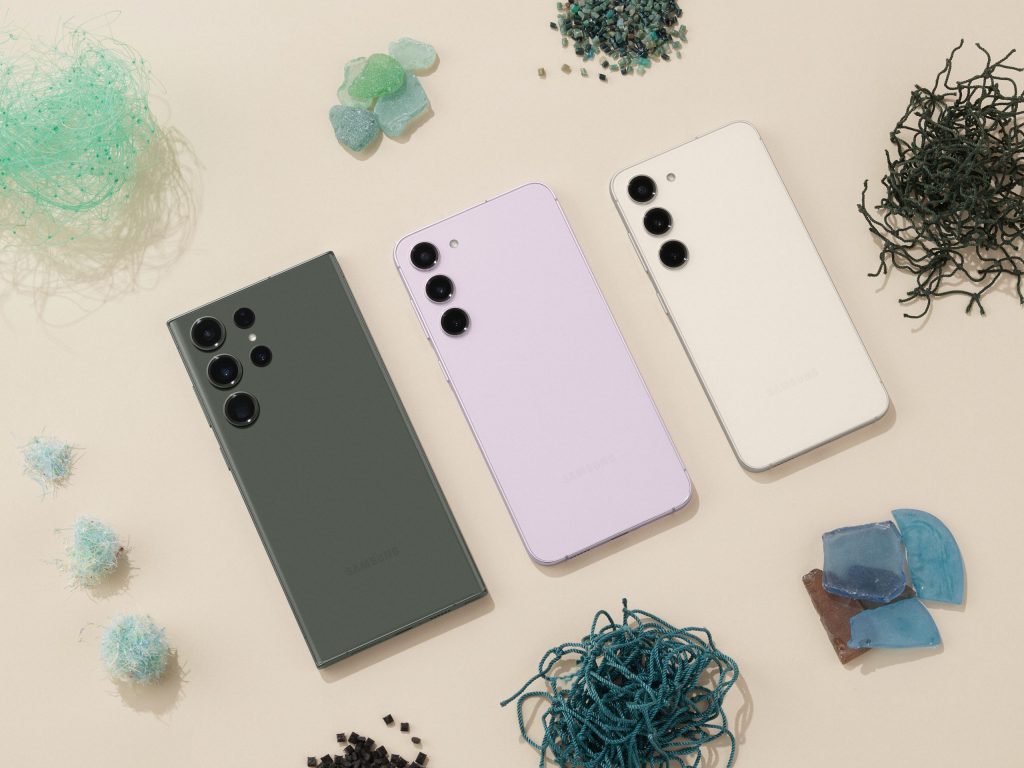
The base options of the S23 including the Galaxy S23 and S23 Plus are also great options. These base option smartphones differ in display size, camera and battery options.
| Dimensions | Height: 163.4mm Width: 78.1mm Thickness: 8.9mm Weight: 234 grams |
| Display | 6.8-inch Edge QHD+ Dynamic AMOLED 2X Infinity-O Display |
| Refresh rate | 120Hz |
| Resolution | 3,088 x 1,440 |
| OS | Android 13 based on One UI 5.1 |
| Chipset | Snapdragon® 8 Gen 2 Mobile Platform for Galaxy |
| GPU | Adreno 712 |
| Storage | 256GB, 512GB |
| RAM | 12GB |
| Selfie camera | 12MP selfie camera, F2.2 |
| Rear camera | 12MP ultra-wide camera, F2.2 200MP wide camera, F1.7 10MP telephoto camera, F4.9 10MP telephoto camera, F2.4 |
| Battery | 5000mAh (typical) |
| Sensors | Ultrasonic fingerprint sensor Accelerometer Barometer Gyro sensor Geomagnetic sensor Hall sensor Proximity sensor Ambient light sensor |
| Water resistance | IP68 |
| Colours | Green Phantom black Cream Lavender |
| Price | Rs 191,999 (12/256GB) Rs 209,999 (12/512GB) |
The Samsung Galaxy S23 Ultra retains a similar design to its predecessor but introduces major upgrades in performance, camera capabilities, and display protection. It has a 6.8-inch Edge QHD+ Dynamic AMOLED 2X display with a 120Hz refresh rate and 1750 nits peak brightness which is protected by Gorilla Glass Victus 2. The smartphone features Snapdragon 8 Gen 2 for Galaxy and has five years of software support. It has a 12MP selfie camera and a quad rear camera setup including a 12MP ultra-wide camera, a massive 200MP main camera and two 10MP telephoto cameras. It comes with a 5000mAh battery and S Pen support. The smartphone is available in three colours black, green and cream–in Nepal.
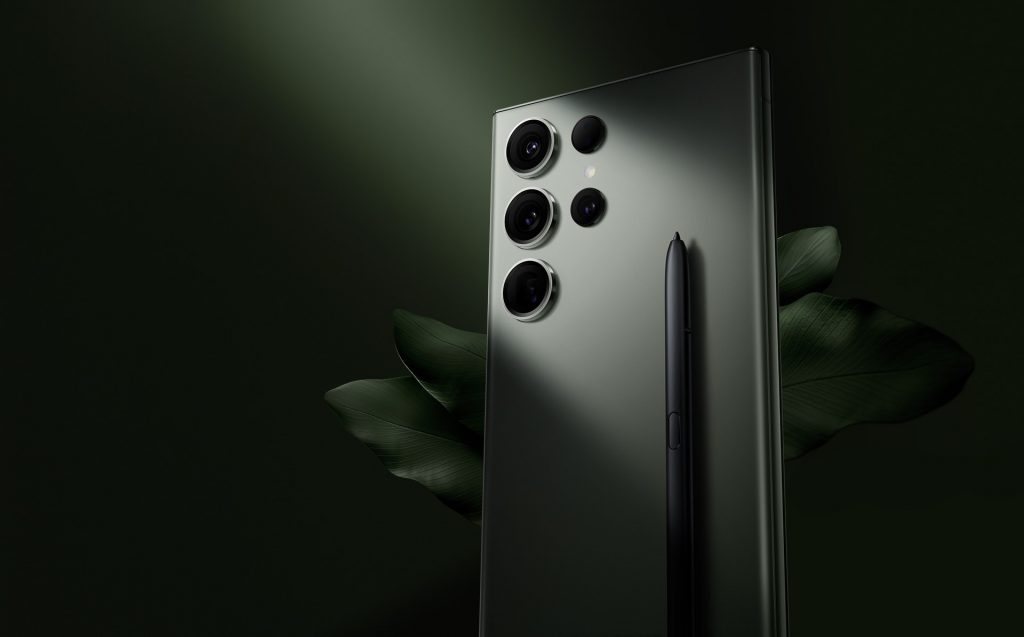
The prices of Samsung Galaxy S23 Ultra in Nepal are 191,999 and 209,999 for 12/256GB and 12/512GB versions respectively.
12. Google Pixel 8 and 8 Pro
The best smartphone for the year 2023 can be given to the Google Pixel 8 and 8 Pro. The Pixel 8 Pro follows the Google Pixel 7 Pro as its successor, continuing Google’s trend of popular flagship smartphones known for software enhancements. Positioned as the premium flagship, the Pixel 8 Pro is accompanied by the Pixel 8, a non-pro variant.
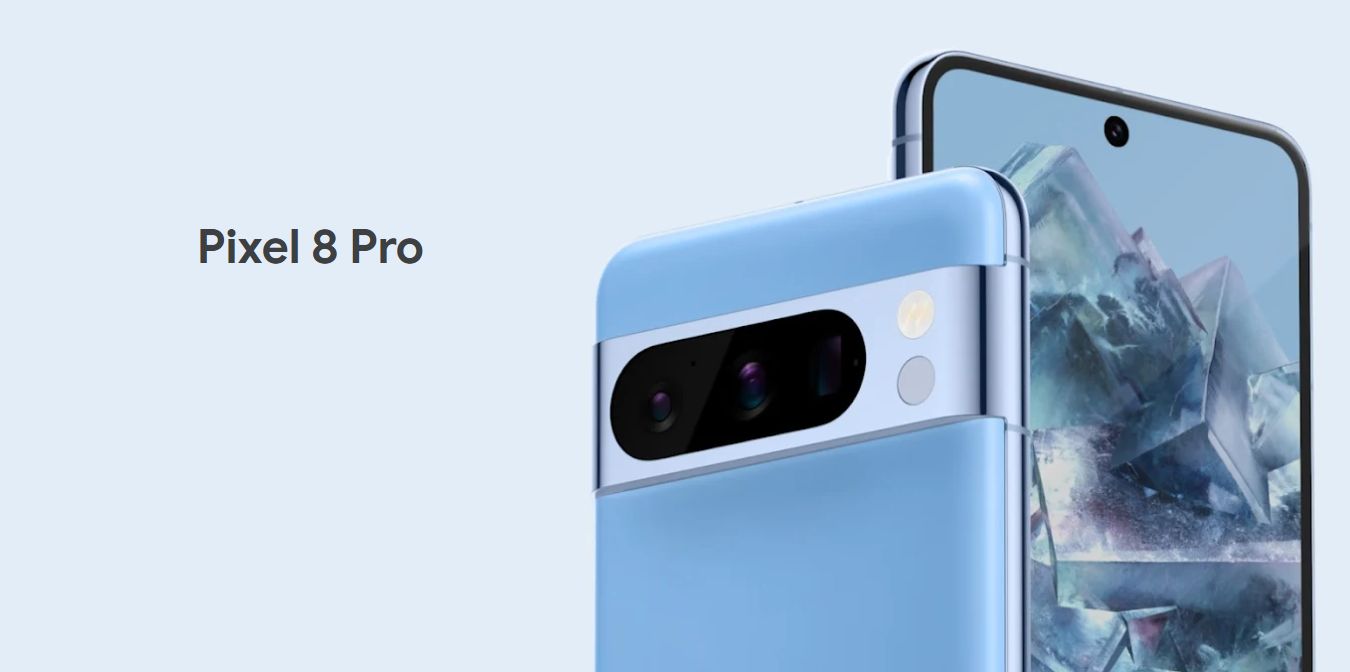
The Pixel 8 differs from the Pro version by omitting a telephoto camera, featuring a smaller screen, and offering a reduced battery capacity. Despite these differences, both models with the latest Google Tensor G3 chipset and a plethora of software features in every aspect from customization to camera elevate the user experience.
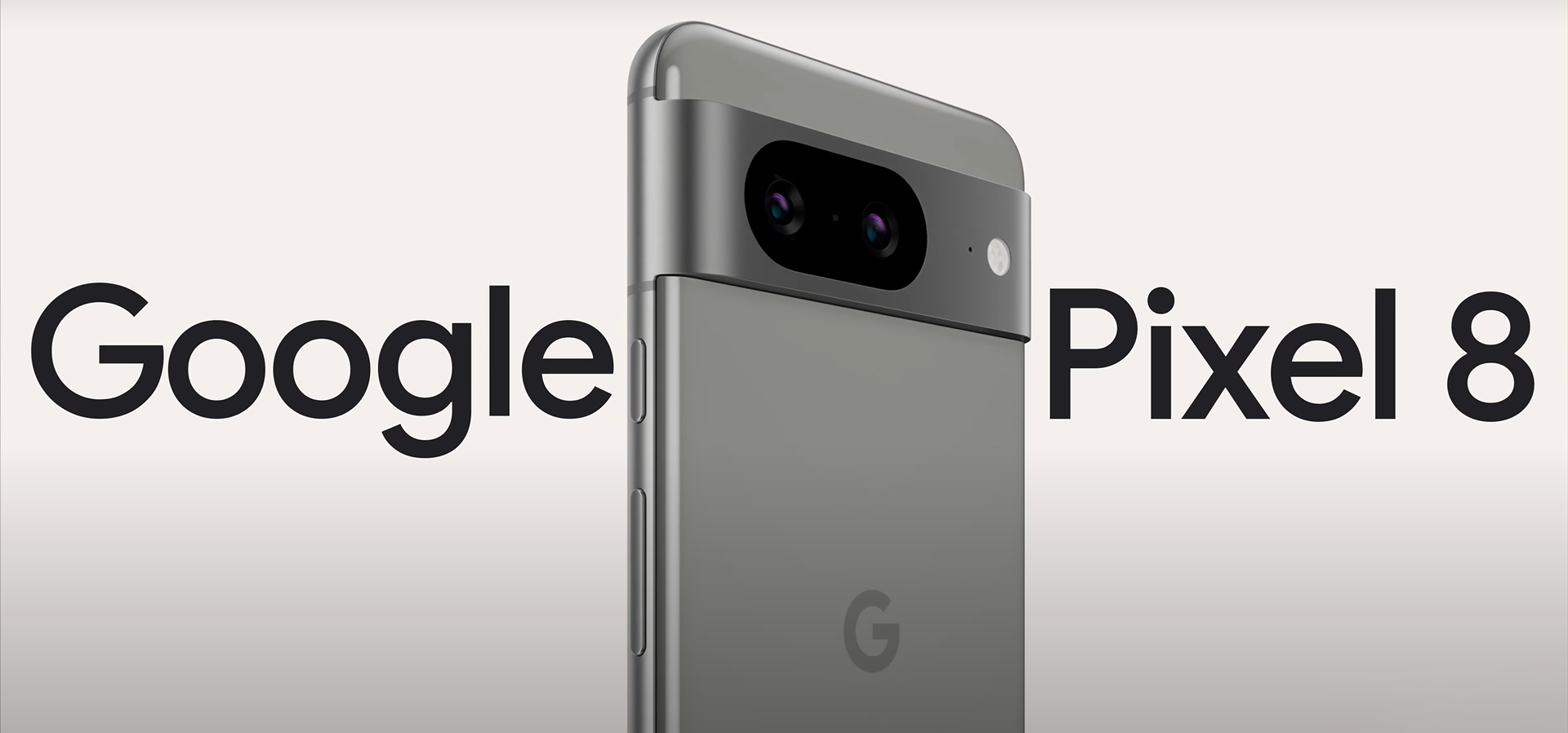
Specifications of Google Pixel 8 Pro
| Dimensions | Height: 162.6mm Width: 76.5mm Depth: 8.8mm |
| Weight | 213 grams |
| Display size | 6.7-inch |
| Display type | LTPO OLED |
| Resolution | 1,344 x 2,992 |
| Refresh rate | 120 Hz |
| IP rating | IP68 dust and water resistance |
| Glass protection | Corning Gorilla Glass Victus 2 |
| Chipset | Google Tensor G3 (4nm) Titan M2 security coprocessor |
| CPU | Nona-core (1×3.0 GHz Cortex-X3 & 4×2.45 GHz Cortex-A715 & 4×2.15 GHz Cortex-A510) |
| GPU | Immortalis-G715s MC10 |
| OS | Android 14 |
| RAM | 12GB |
| Storage | 128GB | 256GB | 512GB | 1TB |
| Rear camera | 50 MP main camera 48 MP ultrawide camera 48 MP telephoto camera |
| Selfie camera | 10.5 MP |
| Wi-Fi | Wi-Fi 7 (802.11be) with 2.4GHz+5GHz+6GHz,2×2+2×2 MIMO |
| Bluetooth | Bluetooth v5.3 |
| Audio | Stereo speakers 3 microphones |
| Sensors | Proximity sensor Ambient light sensor Accelerometer Gyrometer Magnetometer Barometer Temperature sensor |
| Authentication | Fingerprint Unlock with under-display fingerprint sensor Face Unlock Pattern, PIN, password |
| Battery | 5,050 mAh |
| Charging | 30W wired 23W wireless Reverse wireless |
| Colours | Obsidian | Porcelain | Bay |
| Price (expected) | Rs 150,000 (12/128GB) |
Specifications of Google Pixel 8
| Dimensions | Height: 150.5mm Width: 70.8mm Depth: 8.9mm |
| Weight | 187 grams |
| Display size | 6.2-inch |
| Display type | OLED |
| Resolution | 1,080 x 2,400 |
| Refresh rate | 120 Hz |
| IP rating | IP68 dust and water resistance |
| Glass protection | Corning Gorilla Glass Victus |
| Chipset | Google Tensor G3 (4nm) Titan M2 security coprocessor |
| CPU | Nona-core (1×3.0 GHz Cortex-X3 & 4×2.45 GHz Cortex-A715 & 4×2.15 GHz Cortex-A510) |
| GPU | Immortalis-G715s MC10 |
| OS | Android 14 |
| RAM | 8GB |
| Storage | 128 GB | 256 GB |
| Rear camera | 50 MP main camera 12 MP ultrawide camera |
| Selfie camera | 10.5 MP |
| Wi-Fi | Wi-Fi 802.11 a/b/g/n/ac/6e/7, tri-band |
| Bluetooth | Bluetooth v5.3 |
| Audio | Stereo speakers |
| Sensors | Proximity sensor Ambient light sensor Accelerometer Gyrometer Magnetometer Barometer Temperature sensor |
| Authentication | Fingerprint Unlock with under-display fingerprint sensor Face Unlock Pattern, PIN, password |
| Battery | 4,575 mAh |
| Charging | 27W wired 18W wireless Reverse wireless |
| Colours | Obsidian | Hazel | Rose |
| Price (expected) | Rs 98,000 (8/128GB) |
The Pixel 8 Pro retains a design similar to its predecessor, the Pixel 7 Pro, with a matte finish on the back and an aluminium frame. It has a LTPO OLED display measuring 6.7 inches and offering a variable refresh rate from 1 to 120Hz. It has a triple-camera setup, including a 50MP wide camera and a 48MP ultrawide camera. In contrast, the Pixel 8 showcases a glossy finish on the Gorilla Glass Victus back, distinguishing it from the Pro model. The Pixel 8 has a 6.2-inch OLED display offering HDR support up to 1400 nits. It has a dual-camera setup that includes a 50MP wide camera and a 12MP ultrawide camera.
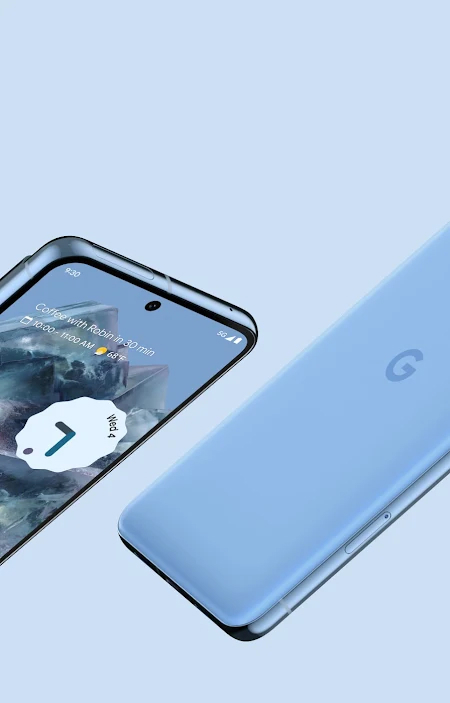
Both smartphones are powered by the same Tensor G3 chipset. As for the major differences between the smartphones, the Pixel 8 Pro has a matte finish, a telephoto camera and a larger display. On the other hand, the Pixel 8 has a glossy finish, no telephoto camera and a slightly smaller screen, providing a more compact feel.




